Music is the universal language
“Glory to God in the highest heaven, and on earth peace to those on whom his favor rests.” - Luke 2:14
Norse Guitar Feeds
How a Four-Pickup Vintage Teisco Electric Continues to Inspire
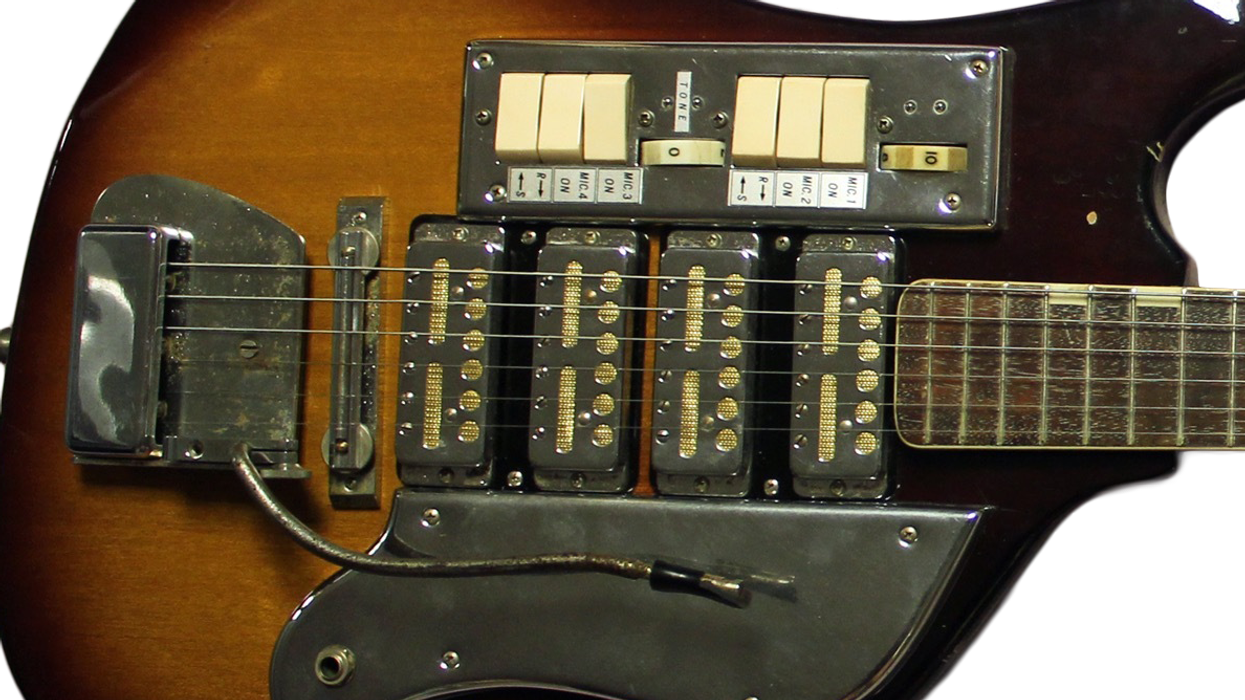
Lately, I’ve been thinking about coaches and teachers—you know, the people in your life that have brought out the best in you. My daughter is now off to college, and my son is entering 10th grade, so I’ve been reflecting on our common experiences. My boy is playing sports and currently has a pretty good coach. The guy is supportive and involved, but still has a little "old-school" in him. When I was a kid, my coach was a “bucket” coach, meaning he brought a five-gallon bucket onto the field and flipped it over so he could sit and criticize everything we did wrong. He’d throw his hat and cuss and generally rule by intimidation! Times have certainly changed, brothers and sisters.
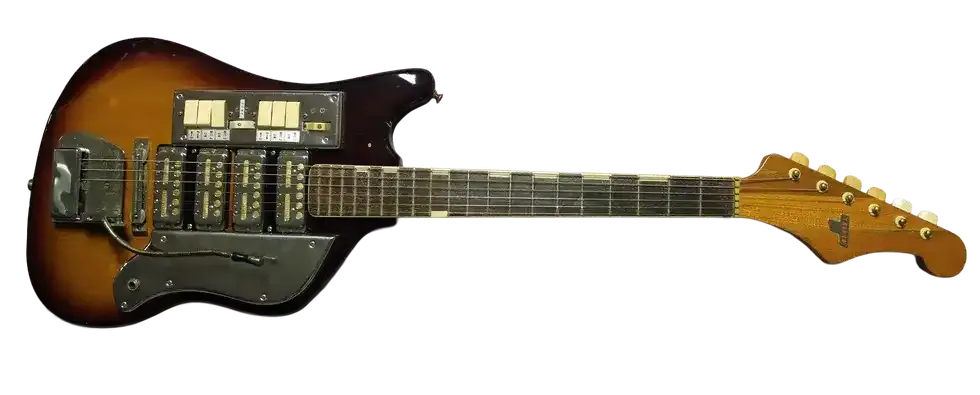
In my old age, I’ve come to learn that the best teachers and coaches were the ones who were excellent motivators: the people who could bring out the best in your performance and learning. Often, motivation comes from knowing that you’re seen and valued, even if you aren’t the sharpest knife in the drawer or the best athlete on the team. These types of people can be hard to find, but we all certainly remember them.
For me, it was Mr. Bryant in the 12th grade. He was a coach, a musician, and a phenomenal educator. I had just lost my dad before my senior year, and he totally tried to lift me up to keep playing sports and stick with guitar. He was a drummer but still had a fine guitar collection, and he would let me choose any one to play. He’d always ask which guitar “spoke” to me. Was it looks, feel, playability, sound, or something else? It’s like when Harry Potter’s wand found him, I suppose. So I ask you, faithful reader, which guitars speak to you? Which guitar gets you motivated to play, and which one inspires you as soon as you play it? Are you still on the hunt, or has your magic wand found you?
My most inspirational guitar is the early ’60s Teisco SS4L. Hailing from the beginnings of Teisco, the SS guitars were among the first to feature the now-famous gold-foil pickups. Of course, the 4L had a quartet of them! This is a guitar where everything is exaggerated to an absurd degree. The electronics feature four switches (pickup on/off) and multiple tone knobs and presets between the rhythm and lead circuits. The body is all out of whack, almost like a goofy-looking potato, and the headstock is elongated to excess. And then the chrome … like an old muscle car! The tremolo on this particular one is a very sophisticated floating unit that’s held together by string tension. Not the easiest to change the strings. These guitars came with one to four pickups and were primarily made from 1962–64. There is every flavor of sound in this guitar, something for every palette. Thin surf, raging blues, spaghetti western … you name it.
“There is every flavor of sound in this guitar, something for every palette.”
These SS4L guitars always inspire me to play because they offer all kinds of adjustments to the tone and tend to bring out the best in my playing. Normally, I’m a set-it-and-forget-it player. But with these guitars, it’s a chance to get creative, and the pickups add to the stew. The body feels kinda clunky and doesn’t balance very well, but the necks all have a nice, deep, full feel, often with a pronounced V-shape, which I totally dig.
I think I currently own four of these guitars, but the one pictured with this column is hanging right by my work bench to offer me a little motivation. I have plenty of nice guitars. Some play better, some feel better, and some sound better. But for whatever reason, I am drawn to this model, and that infatuation has lasted through the years. Oh, and you know what else? The “bucket” coach that I had still comes to watch football practice! He’s not always on a bucket these days, and he’s not yelling at anyone, but he’s still motivated.
Stompboxtober 2025: StewMac
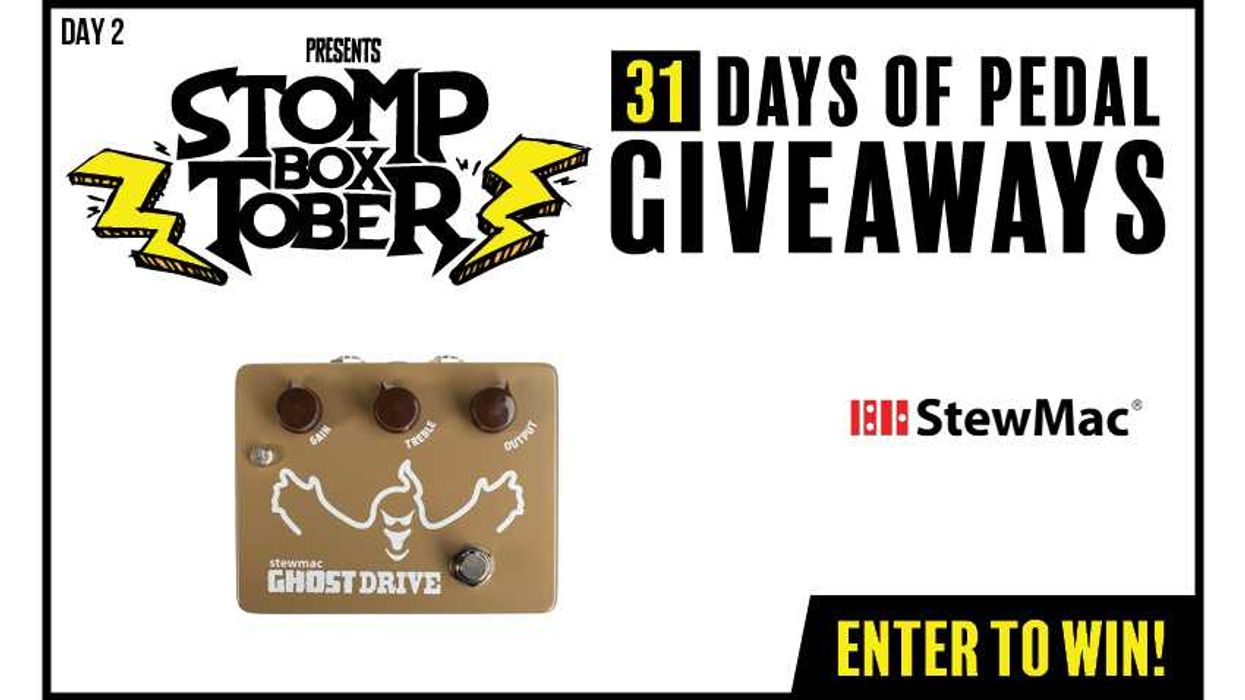
Stompboxtober is back for 2025! Come back all month long for your chance to WIN daily pedal giveaways. Today's featured giveaway is the StewMac Ghost Drive!
Stompboxtober 2025 - Win Pedals All Month Long!
Ghost Drive Transparent Overdrive Pedal
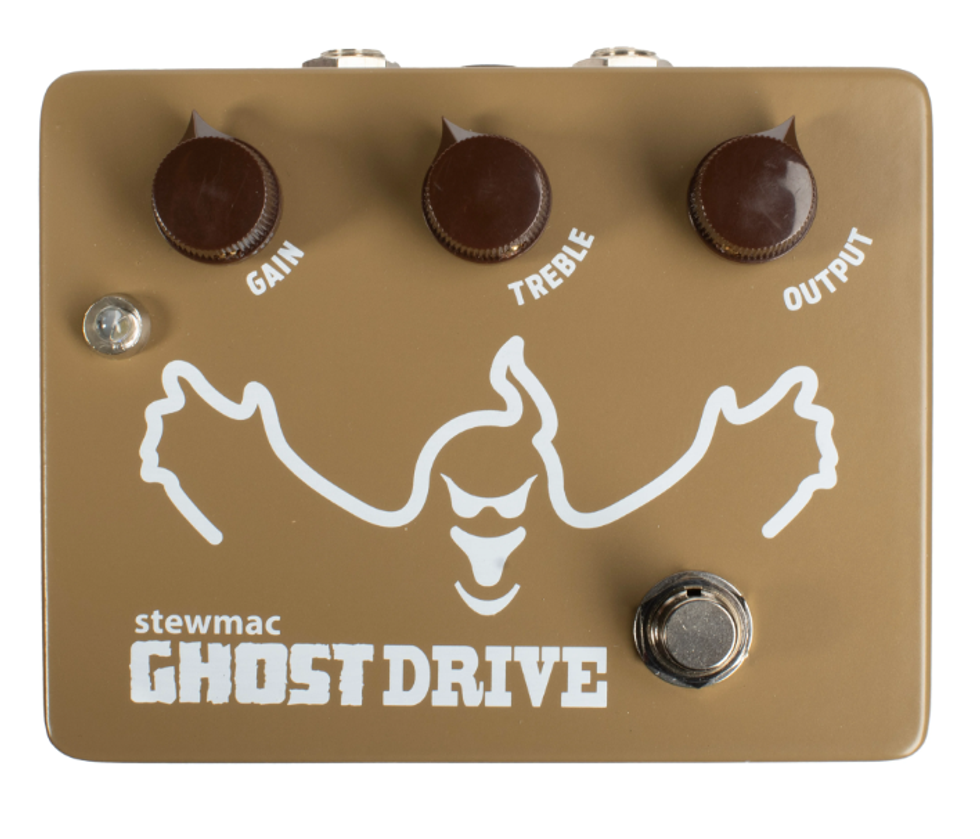
Four years ago, we put our heads down and dove headfirst into the most hyped pedal of all time. We wanted to see what really made the mythical Klon Centaur Transparent Overdrive so special—what was inside this thing that turned it into legend. We pulled it apart, piece by piece, to deconstruct the magic, if you will.
Then we rebuilt it. Faithfully recreating the circuit, scouring the globe to track down the very same components Bill Finnegan used in the originals. The goal wasn't "close enough." The goal was a true tribute—authentic down to the tiniest detail.
Here's the thing: original Klons still sell for $5,000–$10,000 on Reverb. That puts them out of reach for most players. We wanted to change that—to capture the authentic tone of a legend and make it something within reach of any guitar player.
Sweetwater Rocks Out with GuitarFest Event
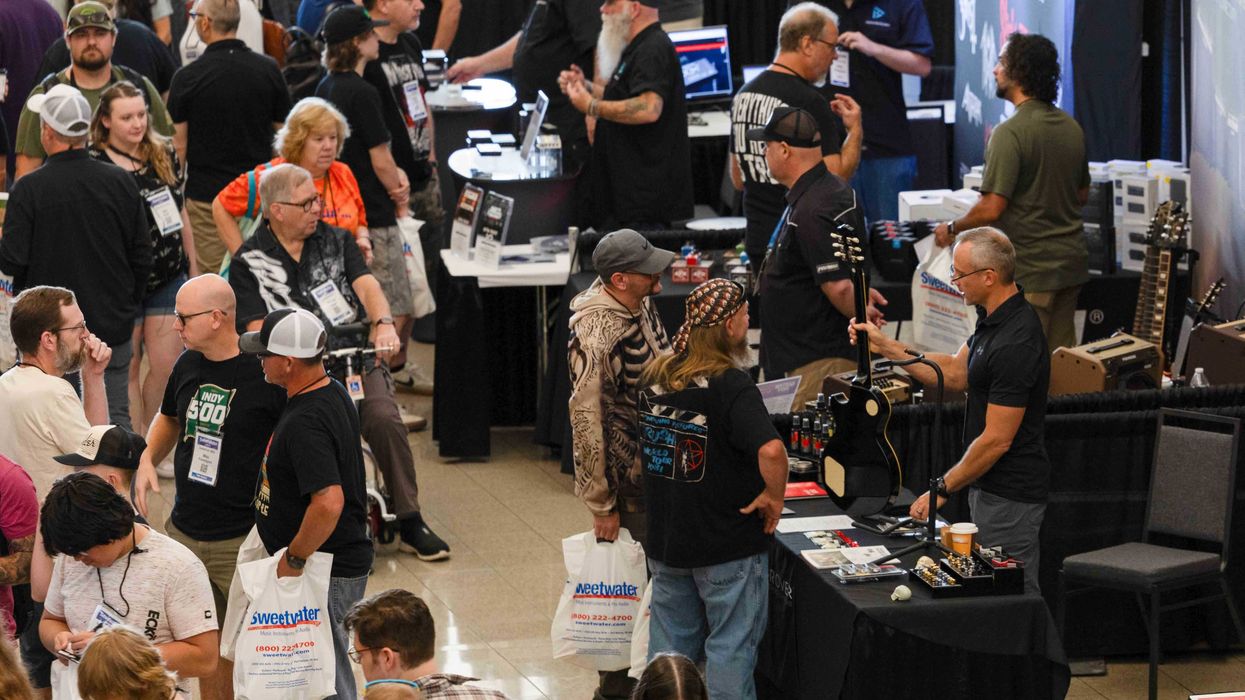
This past weekend, Sweetwater had the pleasure of welcoming guitar enthusiasts to our Fort Wayne, Indiana, campus for GuitarFest. The event featured over 70 manufacturer booths, more than 20 world-class guitarists, and numerous industry leaders, all coming together for a celebration dedicated to the guitar.
“It was an incredible event,” shared Samantha Hunter, Director of Artist Relations and Campus Productions at Sweetwater. “Music enthusiasts and guitar players had the unique opportunity to see up close the very latest gear and engage directly with the manufacturers. Additionally, fans had a chance to meet some guitar legends and collect autographs, creating lasting memories for all that attended.”
Held on Saturday, September 27, GuitarFest was a one-day event that drew several thousand music fans from all over the Midwest. The event underscored Sweetwater’s commitment to creating a community for music lovers and providing opportunities to share the passion of music.
Sweetwater is very appreciative to everyone who came together to make this event such a success. GuitarFest was made possible because of our partnership with our vendors, the artists, and our employees.
About Sweetwater
The number one online retailer for music makers, Sweetwater is trusted and beloved by millions of musicians, sound engineers, band and orchestra directors, and podcasters who rely on the company to help advance their musical and creative journeys. From beginners to rock stars, music makers everywhere seek out Sweetwater’s industry-leading expertise, including in-depth product videos to inform their purchases and unrivaled post-care support. Headquartered in Fort Wayne, Indiana, and founded in 1979, Sweetwater Sound, LLC credits its four decades of profitability to its now 2,500 employees and its deep understanding of the profound connection that music makers have with their craft, their gear, and the creative process. Sweetwater is amplifying change through music, lifting up communities by creating, empowering, and caring about the music makers of tomorrow and today. For more information, visit Sweetwater.com/.
Vernon Reid: Gathering Signals from Across the Musical Universe
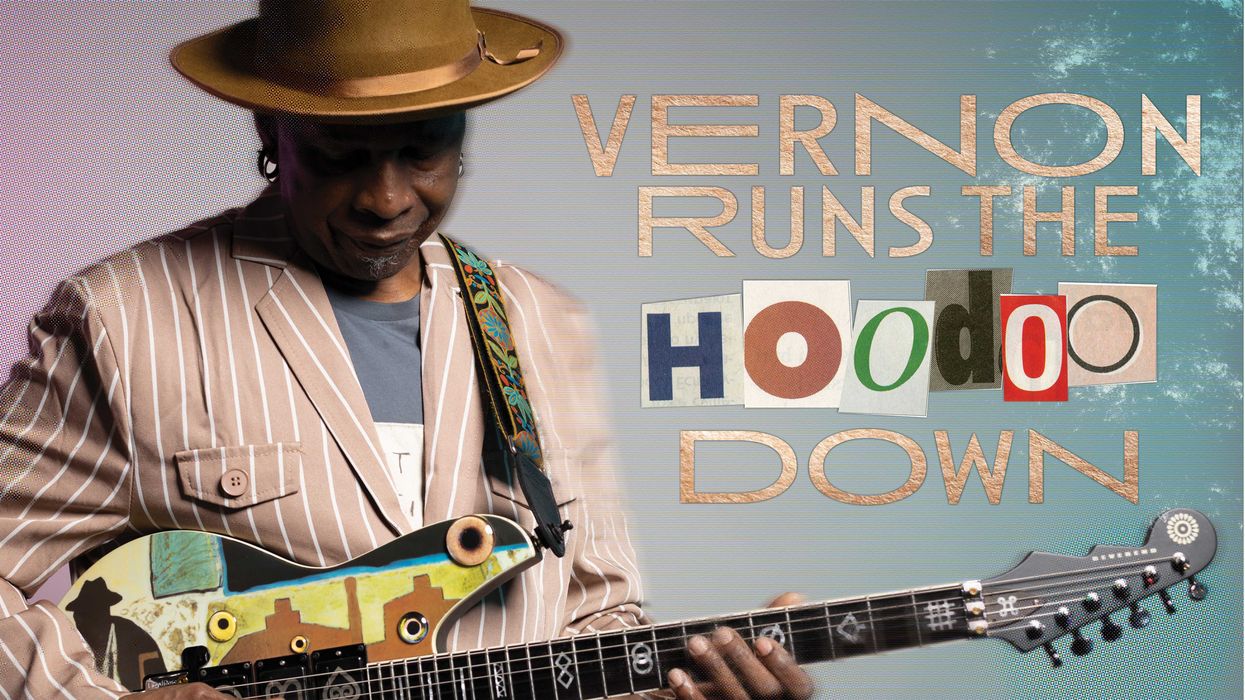
“Avant-garde, jazz, pop, rock ’n’ roll ... if some aspect of the human condition comes through in the music, that’s what animates me,” Vernon Reid says about his approach to sound. “It animated me before I even picked up the instrument. And it has animated me all the way through.”
It’s this unwavering commitment to human connection over stylistic boundaries that has defined Vernon Reid’s career—and it’s perhaps never been more evident than on his new solo album, Hoodoo Telemetry. Reid is speaking to Premier Guitar from what he calls the DharmaLab, his home studio on Staten Island. The name nods to the Dharma Initiative from the TV series Lost (“I’m a big fan,” he says), and like that show’s mysterious island, the Living Colour guitarist’s musical world follows its own rules, where seemingly disparate elements meet to create something entirely new.
Hoodoo Telemetry, his first album released entirely under his own name since 1996’s Mistaken Identity, embodies this philosophy. The title itself speaks to the collection’s nature: “hoodoo” suggests mystical forces and folk magic, while “telemetry” implies the gathering of information from distant sources. “I can understand why anyone listening to it would go, ‘This is all over the place,’” Reid acknowledges. “But I’ve kind of been all over the place, really, in every context I’ve been in.”
The path to Hoodoo Telemetry began years ago, pre-Covid, but that “huge interruption” fundamentally shaped the record’s final form. During those lockdown days, Reid found himself cycling over New York bridges, taking photographs, playing guitar, and contemplating where he wanted his music to go.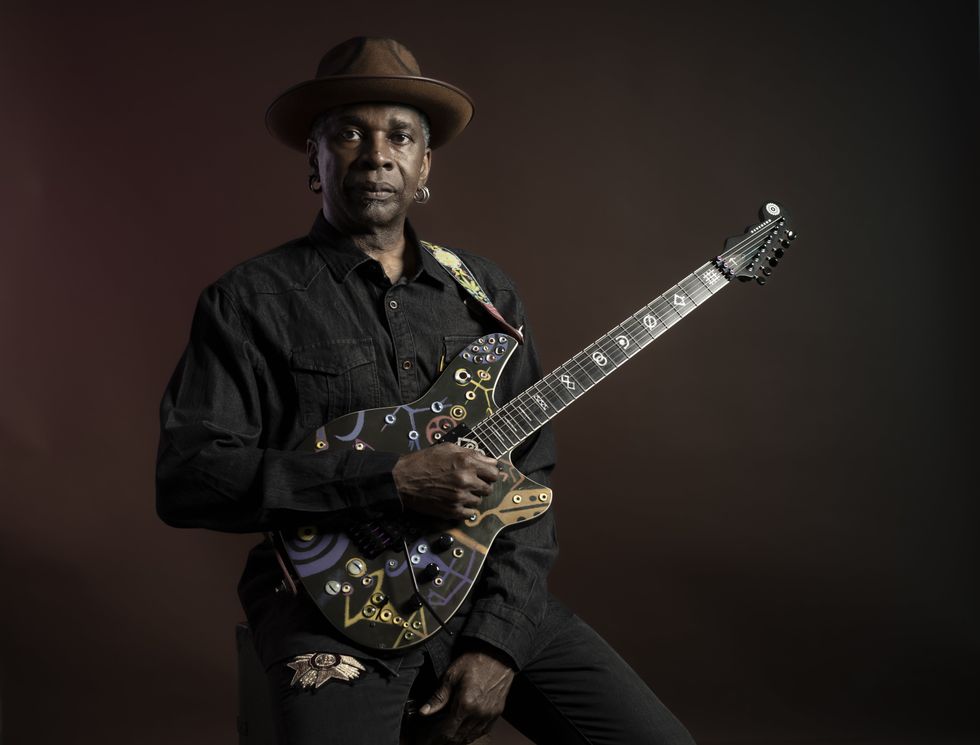
Then tragedy struck. Reid lost his close friend Greg Tate, the influential writer, guitarist, and critic who had been instrumental in his early career. Though Tate didn’t die from Covid directly, Reid considers him a Covid victim due to the stress the pandemic placed on the healthcare system. “We think about the victims of Covid as the people that had Covid themselves,” he says, “but there were plenty of other people that, if the healthcare system wasn’t strained by Covid, they would’ve have survived their situations.”
The loss proved pivotal. Tate had written the first serious article about Reid and his music, and the two had been co-founders of the Black Rock Coalition. Tate passed on December 7, 2021—the exact same date, Reid says, that the Black Rock Coalition held its first public event, in 1985. “It was a traumatic thing, and it sort of reframed or focused what I was doing—I wanted to make a record that Greg would like.”
Indeed, Tate’s influence permeates the album. Burnt Sugar, Tate’s experimental collective, is featured on three tracks, while Reid also says his friend encouraged him to sing more (which he does, on the track “In Effigy”). “[Greg] said, ‘Man, you have a quality to your voice,’” Reid says. “‘You have a thing,’ you know?”
There are other elements woven throughout Hoodoo Telemetry. “Part of the thread in the album is the idea of the diaspora—the idea of being adrift,” Reid says. This is reflected from the first track, “Door of No Return,” which draws on the historical term for the final passage of enslaved Africans leaving their homeland for America, to the closing number, “Brave New World,” which takes its title from Aldous Huxley’s cautionary dystopian novel. “Where’s the center, right?” he continues. “Especially when you realize the trip is a one-way trip.”
Musically, the album has an eclectic and adventurous spirit. There’s “Politician,” Reid’s take on the Cream classic. The choice reflects both personal history—Reid played the song with Jack Bruce in the band Spectrum Road—and contemporary relevance. “It’s my favorite Cream tune,” he says. The sentiment behind it, meanwhile, is “an evergreen thing,” he continues, “what with these jive so-and-sos….”

“Ever since I saw Clapton with The Fool, I’ve loved guitars with graphics.”
Another song, “Freedom Jazz Dance,” emerged organically during recording sessions at Super Giraffe Sound in Brooklyn. Originally planned as an instrumental, the tune transformed when Burnt Sugar vocalist Bruce Mack suggested incorporating Eddie Jefferson’s vocalese version. The result became what Reid describes as “this kind of ‘60s sci-fi version of the song.”
Perhaps most poignant is the skittering, atmospheric “Good Afternoon Everyone,” built around a found vocal recording Reid captured in the subway, where a homeless man repeated the same request with unchanging inflection: “Good afternoon, everyone. Can anybody help me with something to eat today?” What initially seemed like mere politeness revealed itself as controlled anger. “I realized, okay, he’s enraged. He’s not just being polite,” Reid says. “But his affect didn’t change. It was really chilling and really poetic.”
The track exemplifies Reid’s approach to social commentary through music. Collaborating with rapper Nironic, “Good Afternoon Everyone” explores homelessness from multiple perspectives. “One of the things [Nironic] did was that he pivoted,” Reid says. “At one point, he’s the person ignoring the homeless person, and then he flips, and he’s also the person seeking aid. I thought that was pretty cool.”
While Reid’s conceptual concerns drive much of Hoodoo Telemetry, his guitar work—the element that, of course, first brought him to prominence—remains equally compelling throughout, expertly balancing furious blasts of technical prowess with emotional expression. Reid can shred with the best of them, but he’s equally capable of restraint when the music demands it.
The contrast between tracks like “Door of No Return” and “Brave New World” illustrates this philosophy. The former demands intensity: “‘Door of No Return’ is really about a kind of feeling,” Reid says. “It’s a certain energy. It’s about loss, it’s about rage. It’s about figuring out, where do I go from here? You’re not going back home. And that requires a certain kind of approach.” Meanwhile, “Brave New World” prioritizes melodic content over flash. “That little guitar melody in the song is more important to me than the solo,” Reid says.
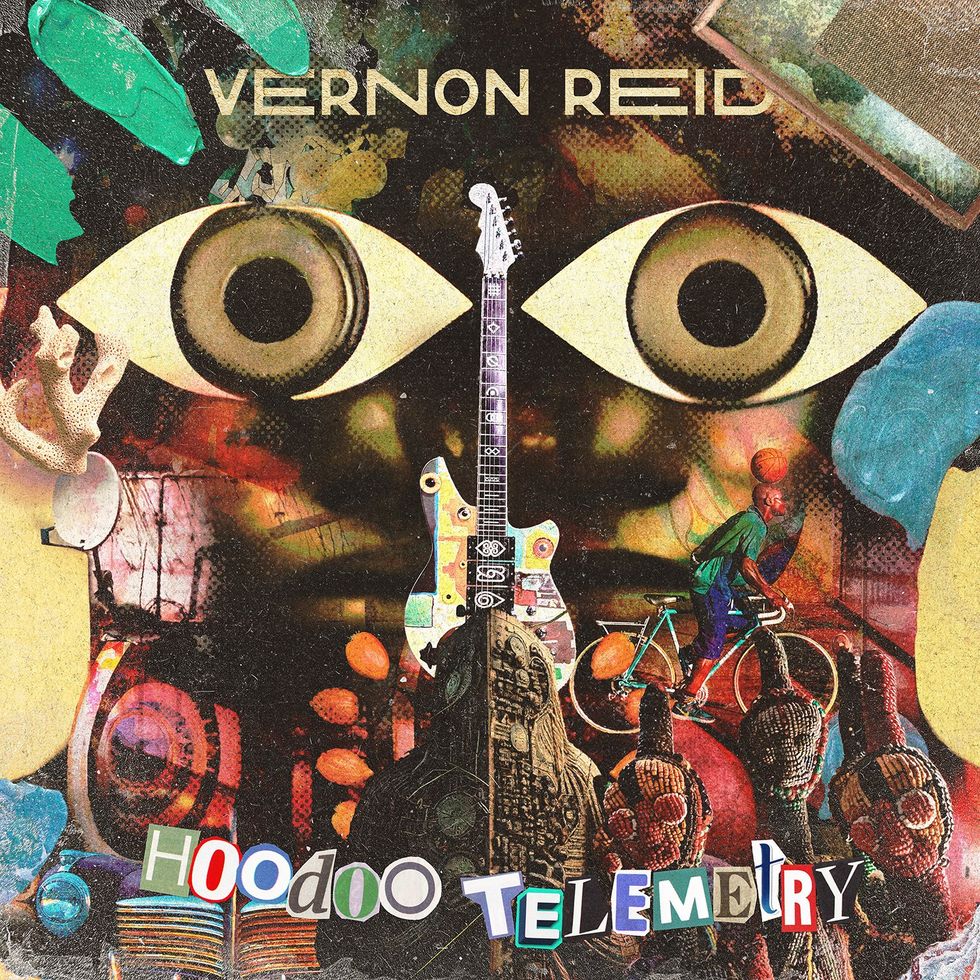
“If you think something is impossible, there’s no way forward.”
For Reid, it’s all about understanding and serving the musical moment. “What does music mean, and what’s the right thing to do for a particular song?” he says. “There are times I can sit there and go, ‘Okay, I wanna play this, and the song could be just a vehicle.' But there’s a balance. Because, man, playing fast is thrilling. But figuring out an approach against a harmonic background, or improvising something, that’s thrilling, too. And at the same time, it has to work for the song. Something like ‘Good Afternoon Everyone,’ that’s not a song for a flash solo. It’s a song for a vibe. That’s one of the things I loved about Prince. He always got that. Because somebody like that, you can do whatever. But the question is, why?”
“Meditation on the Last Time I Saw Arthur Rhames” serves as perhaps the album’s most personal statement (as well as a vessel for some of Reid’s wildest, most thrilling lead playing), honoring the avant-garde New York City-based musician who profoundly influenced Reid’s understanding of guitar possibilities. “Arthur Rhames used to play stuff at Prospect Park [in Brooklyn],” Reid says. “And it was only when I heard Allan Holdsworth that I said, ‘Oh, that reminds me of what this guy in Brooklyn used to do.” The track combines blues elements with modal, Coltrane-influenced improvisation, “and there’s also influence from Sonny Sharrock and Pete Cosey, especially when he was playing with Miles [Davis], doing that super psychedelic, heavy, mysterious thing,” Reid says. “One of the things I love about Miles in that period is he wasn’t trying to explain. He was like, ‘You either got it or you ain’t get it.’”
When it comes to the actual guitars on the record, Reid points out that the recording of Hoodoo Telemetry mostly predates the arrival of his current signature Reverend model, drawing instead from his extensive collection of instruments accumulated over the years. “Some of the stuff is my old Hamers,” he notes, referencing his custom Chaparral and the model he calls “Yin-Yang,” which appeared on multiple tracks. He also utilized his signature PRS S2 VR Vela, a Gibson ES-345, and a Stephen McSwain guitar with an aluminum flag top design that he nicknamed “Tuskegee.”
That said, his Reverend signature model does make appearances, notably on tracks like “In Effigy” and “Brave New World,” which were recorded more recently. The Reverend features his preferred V-shaped neck profile, a specification he’s maintained since his ESP days, as well as a trio of custom Railhammer humbuckers that he says are “pretty amazing for the way they take to overdrive and distortion.” Visually, the guitar reflects Reid’s affinity for striking graphics. There’s symbology inspired by the likes of Carl Jung, Joseph Campbell, and Jean-Michel Basquiat imprinted on the body, inlays in the shape of “hobo signs,” and pickup covers sporting African Adinkra symbols. “I wanted to put together something that was almost like an outsider art-type project,” Reid says. “And when we were coming up with the images and designs for it, what we wound up at was, why don’t we just do it as a series?”
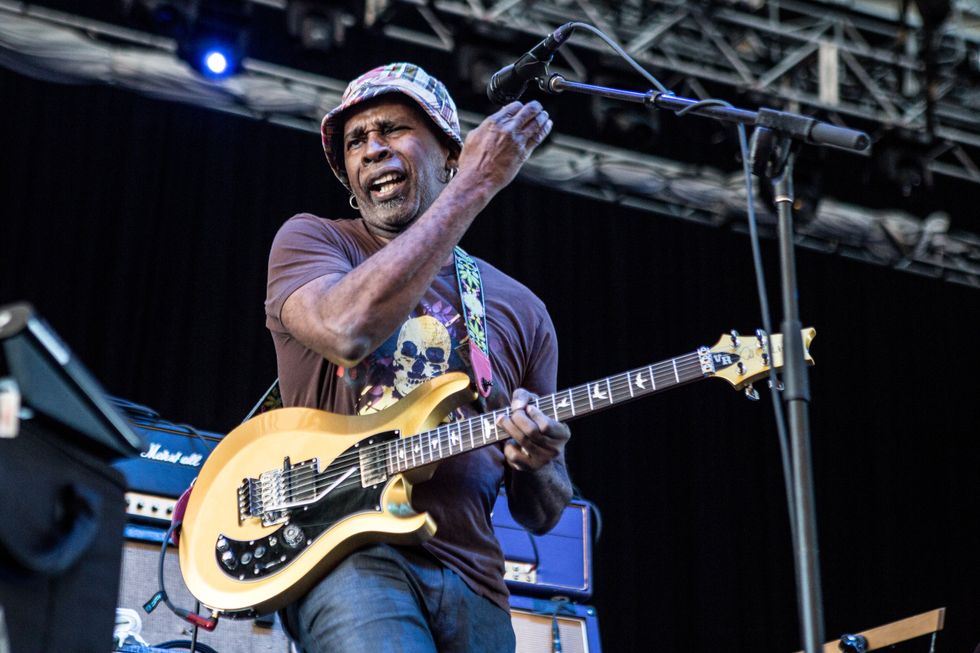
The collaboration with Reverend, which is known as the Totem Series, embodies his lifelong appreciation for guitars as visual art. “Ever since I saw Clapton with The Fool, I’ve loved guitars with graphics,” Reid says. “And I always loved stickering guitars. Because they are a canvas, you know?” And not just for him: “I recently ran into Jack White at Memphis Airport, and we wound up trading signature models,” Reid recalls. “I gave him a [Reverend Totem Series] Mystery Tramp, and he gave me a [Fender] Triplecaster. And then he did the same thing with Kirk Hammett—they traded signature guitars. I think it’s really nice when that can happen between players.”
Like Hammett and White, Reid is an iconic figure in the rock-guitar world. But if his success with Living Colour seems almost paradoxical given his deep roots—and experience—in jazz, experimental, and avant-garde music, he sees it as part of a natural continuum shaped by early exposure to diverse music. “My folks, they never told me what music I should or shouldn’t listen to,” he says. “The only thing they said to me was, ‘Turn it down—it’s loud!’ But they never said, ‘Don’t listen to that.’ I was never policed.”
Growing up in New York City also helped. Reid recalls going to “Music Row”—the stretch of 48th St. in Manhattan that for decades was home to famed gear outposts like Manny’s and Sam Ash—and rubbing elbows with the likes of Leon Russell, Mark Knopfler, and George Benson. “You would just see these guys walking around, and that made impossible things seem not completely unattainable,” he says.
Vernon Reid’s Hoodoo Telemetry Gear
Guitars:
Reverend Vernon Reid Totem Series “Mystery Tramp”
’90s-era Hamer Custom Chaparrals, including “Yin-Yang” model
Hamer DuoTone
Parker Fly VR Dragonfly prototype
PRS McCarty Semi-hollow
PRS S2 VR Vela signature
Gibson ES-345
Stephen McSwain electric
Don Musser concert acoustic
Eko 6-string banjo
Amplifiers
Mesa Boogie Dual w/ Mesa cabinet
Laney Ironheart
Fender Twin
Kemper Profiler
Effects:
Line 6 Helix and Helix Floor
Line 6 POD Go
Eventide H9, H90, Rose
Chase Bliss Warped Vinyl HiFi, Generation Loss, and MOOD
Red Panda Tensor and Particle
Digitech XP-300 Space Station, FreqOut, Whammy Ricochet, and DOD Mini Expression
Alexander Pedals Super Neo-Matic
Source Audio Nemesis and Collider
Mission Engineering Expressionator
Roland VG-99
Boss SY-300 Guitar Synthesizer
Software
Ableton Live
Pro Tools
Native Instrument Guitar Rig
“Playing fast is thrilling. But figuring out an approach against a harmonic background, or improvising something, that’s thrilling, too.”
New York was instrumental to Living Colour’s development as well. “Living Colour happened because of CBGB,” he says. “Without CBGB, we wouldn’t have built our local following. And that also goes for the Ritz, the Cat Club, the Mudd Club, all these places. Living Colour wouldn’t have happened without me playing with Ronald Shannon Jackson and the Decoding Society,” he says of his time with the downtown avant-jazz collective. “And the reason why it wouldn’t have happened is because, from that, I learned it’s possible. That’s it. That’s the whole point. Because if you think something is impossible, there’s no way forward. I mean, nobody should play the lottery, right? Nobody should play Powerball. Logically, it’s a fool’s errand. Except for the fact that people win, right?”
That notion of possibility against the odds is what drives Reid’s continuing musical evolution. Even as he unleashes Hoodoo Telemetry, he’s assembling “a small but mighty ensemble” featuring longtime collaborators Leon Gruenbaum on keyboards and Steve Jenkins on bass for upcoming shows, including a performance at the Blue Note in New York City. And then there’s a new Living Colour record on the horizon, which, Reid says, “We’ve been in the process of writing,” as well as the possibility of performing music from his solo albums, stretching from Hoodoo Telemetry all the way back to Mistaken Identity. “It would be really fun to do that with the band,” he says. “And I’m excited about all of it. I’ve just gotta thread the needle, and away we go.”
VegaTrem Introduces VT1 Special With Brass Block
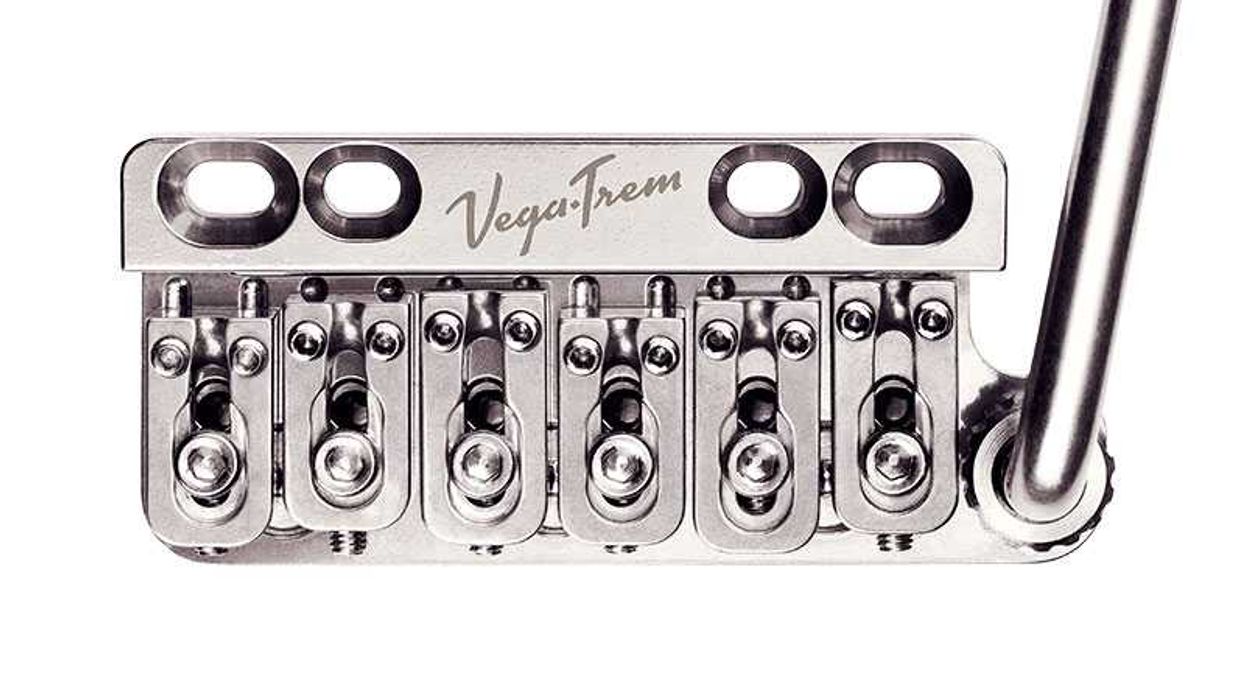
VegaTrem has unveiled the VT1 Special, a new take on the company’s iconic VT1 UltraTrem blueprint.
The VT1 Special utilizes a new brass block at its core, offering a friendlier price point while retaining all the key attributes that have made VegaTrem an essential choice for so many guitarists: it can be installed while keeping your guitar completely intact, and offers wide tonal range, simplicity and rock-solid tuning.
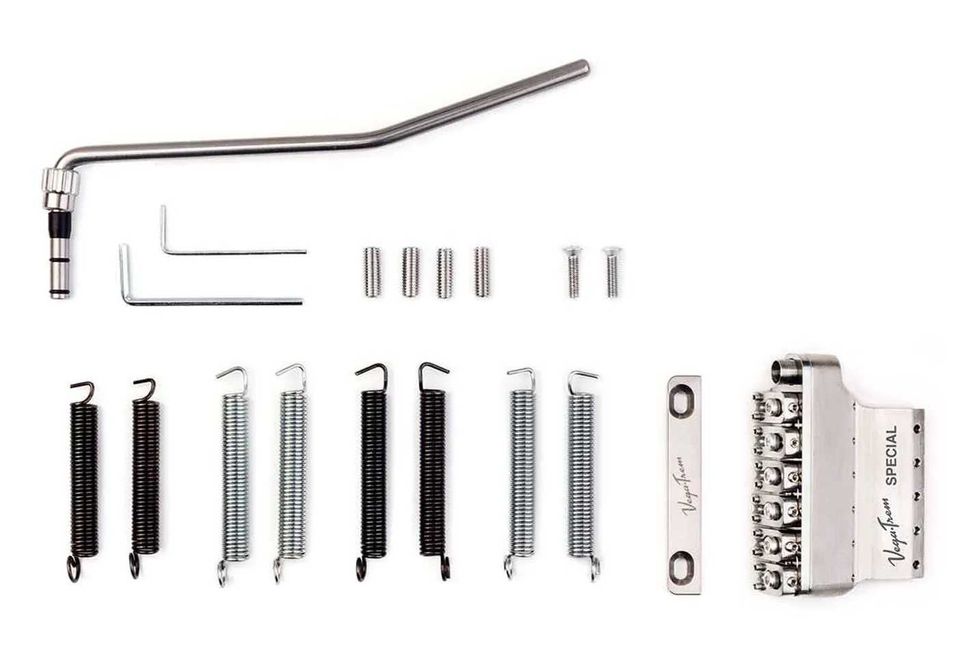
The VT1 Special is available in standard (6-screw) and 2-point versions in four different premium finishes (Glossy, Gold, Black, Satin) with left-handed options.
‘We at VegaTrem have reverential respect for all those guitarists that have given us so many great moments,” says Isaac Vega, guitarist and VegaTrem founder. “VT1 Special is our way of opening the door of the VegaTrem tremolo spirit to even more players—no drilling, no sanding, no surgery.”
By adopting a premium brass block, the new VT1 Special delivers a distinctive timbral palette that broadens the musical possibilities of the VegaTrem tremolo family—while preserving the hallmark feel and stability players expect from VT1.
The VegaTrem VT1 Special is available starting at $199 USD / €170 and can be purchased from dealers worldwide and at vegatrem.com.
Kirk Hammett co-founded pedal brand KHDK Electronics is now making guitars

Kirk Hammett co-founded pedal brand KHDK Electronics has branched out into guitar building, with a range of new models debuted at the recent Guitar Summit 2025 in Mannheim, Germany.
While info is relatively sparse at this time, we do know that the guitars unveiled sport some unconventional shapes, which some commenters have picked up on…
That said, it looks like some of the shapes are inspired by classic designs, including a model reminiscent of a Les Paul with P-90 pickups and Bigsby vibrato, an Explorer-style model, and what looks to be an SG-inspired double cut.
In response to one user on its Instagram post unveiling the guitars, who wrote, “I’m so sick of copyrights, all it does is make companies release ugly guitar shapes,” KHDK simply replied: “We love ugly guitars.”
As we say, information surrounding spec sheets for these guitars or pricing is few and far between at this stage, but we’ll endeavour to keep you in the loop as we know more…
Founded in 2012 by Kirk Hammett and collaborator David Karon, KHDK has, until now, been a pedal brand, with signature stompboxes designed for the likes of Deftones’ Chino Moreno, Anthrax’s Scott Ian and Avenged Sevenfold’s Zacky Vengeance.
The brand’s foray into electric guitars is a bold one, and a move not often undertaken by pedal brands.
Visit KHDK Electronics for more information as it comes out.
The post Kirk Hammett co-founded pedal brand KHDK Electronics is now making guitars appeared first on Guitar.com | All Things Guitar.
“I’ll never forget the sound of 82,000 people singing back at me”: Watch Sophie Lloyd open the Women’s Rugby World Cup Final with a 5-minute shred medley

Last weekend, Sophie Lloyd opened the Women’s Rugby World Cup Final with a stunning five-minute shred medley, before the game that would ultimately see England triumph over Canada.
In an Instagram post uploaded shortly following the event, the guitarist calls the occasion “one of the proudest moments of my life”, adding: “It felt like such an empowering day for women everywhere and I’m so honoured to have played a part in it.”
Now, speaking to Metal Hammer, Lloyd reveals that she was entrusted by organisers to “take their vision into my hands and create something new”. “I loved the song choices and had the best time composing the arrangement,” she says.
“Walking onto that pitch, I could really feel the support of everyone there, it was such a powerful moment of unity. Rock and roll has a way of bringing people together, and I’ll never forget the sound of 82,000 people singing Livin’ on a Prayer back at me.
“The whole day felt bigger than music or sport; it was about women showing strength, power and unity on a global stage. It was incredibly empowering, and I’m beyond honoured to have been part of it. Massive respect to every player who left it all out on the pitch, and huge congratulations to the Red Roses for making history and bringing the cup home.”
Sophie Lloyd rose to fame posting shred videos of classic songs to her YouTube channel. Her considerable following – 1.25 million on YouTube and 1.3 million on Instagram at the time of writing – even caught the attention of superstar Machine Gun Kelly, who drafted her into his backing band in 2022.
For her World Cup final performance, Lloyd wove together a medley of several tracks, combining her own track Battleground with Bon Jovi’s hit Livin’ On a Prayer and Black Eyed Peas Pump It
This performance was a pit stop before Lloyd hits the road this month with Deep Purple’s Glenn Hughes, whom she’ll be playing with as a special guest on his Chosen Years tour, with dates across the UK starting in October.
The post “I’ll never forget the sound of 82,000 people singing back at me”: Watch Sophie Lloyd open the Women’s Rugby World Cup Final with a 5-minute shred medley appeared first on Guitar.com | All Things Guitar.
Tommy Emmanuel on Onstage Curveballs, Recording Stories & Tone Philosophy
The Certified Guitar Player chats (and jams) with John Bohlinger about recording his new album Living in the Light, detailing his philosophy on tone and live sound, his focus on song arrangements and melody, hitting the onstage curveballs, and why he’ll never retire from being happy (performing).
Visit StewMac: https://stewmac.sjv.io/APO2ED
“They were expecting him to say, ‘Can you turn the bass up?’ And he probably never did”: …And Justice For All producer says James Hetfield and Lars Ulrich “hated” that Jason Newsted was a Metallica fan
![[L-R] Jason Newsted and James Hetfield of Metallica](https://guitar.com/wp-content/uploads/2025/10/Jason-Newsted-and-James-Hetfield-of-Metallica@2000x1500.jpg)
Though one of the iconic records in the history of thrash and prog metal, Metallica’s landmark 1988 album …And Justice For All has not been without its critics, mostly pointing to the lack of volume on Jason Newsted’s bass lines.
The album’s producer Flemming Rasmussen has put forth several theories as to why the band opted for a reduction in bass volume, including last year when he suggested they did so to “get a reaction out of” Newsted, as he had joined the band as a fan.
Now, in a new interview with Chile’s Futuro [via Blabbermouth], Rasmussen explains that the lack of bass on the album may have been due to James Hetfield and Lars Ulrich wanting to better hear their guitar and drum parts, respectively.
As the story goes, Rasmussen “had to say no to doing that album [at first]” because he was fully booked, and so the band worked with a series of “hotshot Los Angeles mixers”.
“They started it out with Mike Clink,” he says. “And then three weeks into January, after they’d been in the studio for three weeks, Lars called me up and said, ‘Oh, Flemming, when can you come?’ And I put all my sessions together and postponed some of them. And I went over there [on] 14 February and recorded for five months.
“And by the time I got there, they already got some hotshot Los Angeles mixers, Steve Thompson and Michael Barbiero, to mix it.”
Rasmussen explains how the band listened to what those producers had done, and said: “no, no, no. Where’s my drum sound? Where’s my guitar sound?”
“And actually Lars said, ‘Now take the bass down so you can just hear it,’” he continues. “They did that… And then once [they’d] done that, he said, ‘Take it three dB more down.’ So, it’s Lars and James that decided, and why they did that, I’ve asked them a thousand times. I do not know.”
Flemming Rasmussen also doubles down on his assertion that the band didn’t like that Jason Newsted joined Metallica as a fan.
“I think the reason why they turned the bass down is, like 50 percent of it is because they were on tour with Van Halen, and they flew in and heard the mix,” he goes on. “And I think that’s the point where Lars and James realised that, ‘We don’t have Cliff anymore. It’s not his bass. It’s a totally different sound.’ And I just think they couldn’t relate to that at that point…
The other half is what they hated most about Jason was that he was such a Metallica fan, so every time they asked him anything, he just did it. So I think they took it down just to piss him off, ‘cause they were expecting him to say, ‘Can you turn the bass [up]?’ And he probably never did. That’s why the bass is so low. But I don’t know.”
Despite its lack of bass volume, …And Justice For All has cemented itself as one of the most classic metal albums of all time, hosting tracks like One, Harvester of Sorrow, Blackened and Dyers Eve.
The album’s mix has even prompted some savvy fans, though, to ‘fix’ the audio by ramping up Jason Newsted’s bass parts. Check out this fan-remastered version of Blackened below, and compare it to the original:
The post “They were expecting him to say, ‘Can you turn the bass up?’ And he probably never did”: …And Justice For All producer says James Hetfield and Lars Ulrich “hated” that Jason Newsted was a Metallica fan appeared first on Guitar.com | All Things Guitar.
Meet Man/Woman/Chainsaw, the London art-punks who love jamming with their dads and chasing the perfect BPM

For a while there, it seemed like solo stars were keeping the music industry afloat. Think Taylor Swift’s Eras tour or Beyoncé’s Renaissance. But if this summer’s festivals are anything to go by, then guitar bands are back — in a big way. Take the post-pandemic pop of Isle of Wight wonders Wet Leg, who amped up their two-piece into a full-blown fivesome. Or Fat Dog, dubbed “the wildest band in Britain,” pushing punk with skronking sax and onstage hi-jinks.
Now from the same South London scene comes Man/Woman/Chainsaw, a six-person art ensemble fusing virtuoso violin lines with the furious tempo of a Black Midi backline. For guitarist Billy Doyle, the shift towards these sizable setups was inevitable. “It’s turning away from that 2000s-2010s indie sound of four-piece, all-male bands. Like, how fucking wacky can we get? In five years, people will say, ‘What the fuck was going on in the 2020s with all the six-piece bands?’” “With saxophone and timpani,” quips frontman/guitarist Billy Ward.
Despite the band’s eclectic output, bandleaders Ward and bassist Vera Leppänen bonded at school over the classic riff catalogue. “My first riff was Smoke on the Water,” laughs Leppänen. “My dad made me learn a lot of KISS songs. We jam a lot together, and still do that whenever I see him.” Meanwhile, Ward was picking up Nirvana before stumbling upon their more angular counterparts. “When we started the band, it was a lot more chaotic. Sonic Youth was a big touch point for tunings,” he recalls. You can hear those nods in last year’s Ode To Clio single, which alternates four and five-bar phrasing as the track builds to a frenzied crescendo. But it’s how these cleverly mastered moments land with the crowd that spurs the sextet on.
“There are moments when we’re writing things,” explains Ward, “and we think, ‘Okay, that’s where the drama is, and then we do it live, and the audience responds to a totally different bit!” Doyle noticed the impact on stage, too. “When you see people responding to a song, it’s a big adrenaline kick. Trying to remain composed with your playing is tricky when you’re excited by watching people move around.” Leppänen insists there could be more of that, though. “At Boomtown, I tried to figure out the BPM that made people move — around 120. But people don’t wiggle enough at our shows.”
Stacked Up
Last year’s Eazy Peazy possesses a few possible crowd-swellers. Recorded in Eastbourne’s Echo Zoo Studio with Gilla Band’s Dan Fox, the five-track EP found the group digging into the playbox, feeding violinist Clio Harwood’s strings straight through full guitar stacks and a sub bass and cranking up the vintage Selmer amplifiers, despite the lack of master volume. “If you turn them up, they sound better!” admits Ward. “But the most fun thing was the Watkins Copicat tape echo. There’s a lot of that to drive the guitar and the violin by cranking the preamp.”
Ward’s obsession with bending sound extends to his instruments too. “My first proper guitar was a Fender Player Jaguar. I still think a Jaguar is the coolest-looking guitar, especially with the plates.” Not content with the off-the-rack model, though, Ward began experimenting. “I’m such a perfectionist that I very quickly started to mod that guitar. I stripped the finish off it, painted it white, changed all the pickups, and the trem.”
The Frankenstein fettling didn’t go unnoticed in their South London setting, however. “Some asshole stole it from The Windmill about a year and a half into us doing shows!” he exclaims. “They just grabbed the case! But that’s fine. I hope they can never get the action right. I hope they’re making shit music with it, and may your riffs always suck.”
For all the sonic explorations, it’s easy to forget that Man/Woman/Chainsaw are still just a bunch of pals having a good time. Too much in some cases when I quiz Leppänen about her memories of the studio. “I had to leave for talking when we were doing overdubs,” she admits bashfully. “Because there are six people, right? Six teenagers, and then one person in there doing takes, and five people on the outside, talking shit, backseat producing, having a little wine. Then Dan’s like, ‘Guys, I actually can’t work. You need to leave!’”
 Image: Sophie Barloc
Image: Sophie Barloc
Shifting Perceptions
If Eazy Peazy saw the group capturing their lairy live energy, then this year’s double A-side ManDog/Adam&Steve sees the collective sharpening those chaotic compositions and leaning on a more traditional rock and roll bedrock. A notable shift from his early Thurston Moore-inspired soundscapes, as Ward explains. “I quickly realised that alternate tunings come with a big bag of problems, and you could just get a big swamp of notes. Now I always stay in standard, and it’s more classic guitar stuff like The Rolling Stones.”
That’s true of the players’ latest instrument choices, too. Ward’s handling a fresh-looking tomato red Stratocaster on our call while Doyle remains loyal to his Telecaster, inspired by players like King Krule and Radiohead’s Jonny Greenwood. Leppänen began on a Wunjo Bass-bought Tanglewood, but after a few early Chainsaw shows, the then-sixteen-year-old musician needed an upgrade. “I said to my dad, ‘Look, I’m in this band. We should probably get me an instrument!’ We got the ESP LTD Surveyor in pearly white.”
Since then, and thanks to the band’s inclusion in this year’s Fender Next Class of 2025 series, she’s added a new number to her live set-up. No awkward pitching necessary. “I’ve always wanted a P-bass,” she beams. So, as studious members of the latest class, what would the Chainsaw string section say is their greatest learning from life on the road so far? Ward’s learnings come straight from the heart. “Don’t overcomplicate shit. You don’t need 10 million things to make your guitar sound clean or dirty. Your performance will be better if you simplify”.
While Doyle, the quieter of the trio, is more reflective. “Treat performances with a bad vibe like an actor would. Leave a shit day behind while you’re on stage.” And proving that Gen Z continues to transform the very premise of self-care, Leppänen adds deadpan. “It’s just self-care shit, and I don’t mean doing a face mask!”
The post Meet Man/Woman/Chainsaw, the London art-punks who love jamming with their dads and chasing the perfect BPM appeared first on Guitar.com | All Things Guitar.
KRK Announces the Kreate Series Studio Monitors
Press Release
Source: Prime PR Group
KRK announces a striking new Latte finish for its Kreate Series Studio Monitors, the latest addition to the brand’s wide range of audio offerings. Available in the 5 inch size monitor only, this new Latte finish offers a stylish alternative to KRK’s world-renowned black finish with yellow cones, adding visual flair without compromising performance.

Whether for casual playback or professional music and content production, the Kreate Series is designed to perform. Available in three sizes—Kreate 3, 5, and 8 inches—the Kreate 3 models are sold as a pair, while the Kreate 5 and Kreate 8 options are priced individually. The KRK Kreate Series is available worldwide through select dealers and online at www.krkmusic.com.
“The midcentury modern aesthetic with our new Latte finish option makes these look and sound at home anywhere. The KRK Kreate Series is the perfect entry point for emerging artists, producers, podcasters, or any content creator,” says Sterling Doak, Vice President of Marketing for Gibson. “The Kreate Series fills a vital space in our lineup, delivering professional-grade sound, and flexible functionality that empower creators to experience high-quality audio at an accessible price.”
KRK Kreate monitors deliver exceptional value and legendary KRK monitoring quality to emerging musicians, engineers, producers, and content creators. These best-in-class, two-way studio monitors are purpose-built to meet the diverse needs of creatives, providing the tools necessary to reproduce every nuance of a production with astonishing clarity and accuracy.
As the brand’s newest studio monitor line, the KRK Kreate Series represents KRK’scontinued commitment to innovation, accessibility, and excellence—supporting a wide range of setups and needs. Ideal for mixing, producing, and content creation,
Kreate monitors offer a variety of standout features among others in their class. These include wireless audio streaming capabilities via pairable Bluetooth® input, alongside balanced and unbalanced analog inputs for flexible connectivity. The monitors are equipped with universal voltage and a switch-mode power supply, ensuring reliable performance across international power standards for seamless use anywhere in the world.
Explore the new KRK Kreate Series at: krkmusic.com.

KRK Kreate Series 5 inch monitors debut in a new Latte finish.
The KRK Kreate Series offers entry-level, active two-way studio reference monitors with wide bandwidth, boundary and tuning EQs, new transducer designs, as well as Class AB, and Class D amplification. Acoustic boundary correction and tuning EQ combinations help minimize and resolve environmental challenges, allowing users to dial in voicing for specific applications.
Composite woven glass fiber cone woofers deliver impressive dynamics, effective damping, and deeper modal control—resulting in tight, punchy mid and low-frequency response suitable for both casual and professional playback environments. The heat-resistant glass fiber structure features a high strength-to-weight ratio, ensuring sonic accuracy and adaptability.

High-frequency reproduction is handled by a carefully engineered woven-textile dome tweeter with a neodymium motor, extending the frequency range up to 40 kHz in the KRK Kreate 8 and 5 models, and up to 33 kHz in the Kreate 3. These textile dome tweeters provide a smooth, accurate response and a more detailed sound profile.
System-tuning level control, along with low and high-frequency shelving filters, allows for easy adjustment in various acoustic conditions. Hybrid Class D and Class AB amplification delivers power and headroom with excellent dynamic reproduction. High-performance transducers are optimized for improved accuracy, and the amplifiers drive them efficiently at reduced operating temperatures—ensuring audio integrity during extended sessions.

KRK Kreate Series (L-R) in 8, 5 and 3-inch sizes.
About KRK:
For more than three decades, KRK—part of Gibson Pro Audio—has been synonymous with high-quality design and exceptional performance in studio monitors, subwoofers, and headphones. KRK delivers products that meet the diverse needs of both home and professional studios, regardless of musical style or application. To learn more, visit krkmusic.com.
About Gibson:
Gibson, the iconic guitar brand, has shaped the sound of generations of musicians and music lovers across genres for over 130 years. Founded in 1894 and headquartered in Nashville, Gibson is known for world-class craftsmanship, legendary artist partnerships, and a legacy of innovation that remains unmatched in the musical instrument industry.
The Gibson portfolio includes its flagship Gibson guitars, along with many of the most beloved and recognizable music brands: Epiphone, on stages since 1873; Kramer, the original “Made to Rock Hard” guitar brand; MESA/Boogie, the home of tone; KRK,powering great music for over 30 years; and Maestro, the pioneer of effect pedals.
Gibson is dedicated to quality, innovation, and sonic excellence—ensuring that music lovers for generations to come continue to experience music shaped by all Gibsonbrands.
Explore more at Gibson.com, on the Gibson App, and Gibson TV. Follow us on Instagram, X, Facebook, and Tik Tok and visit us at the Gibson Garage Nashville andGibson Garage London.
Synergy Amps Launches the Marshall JMP Preamp Module
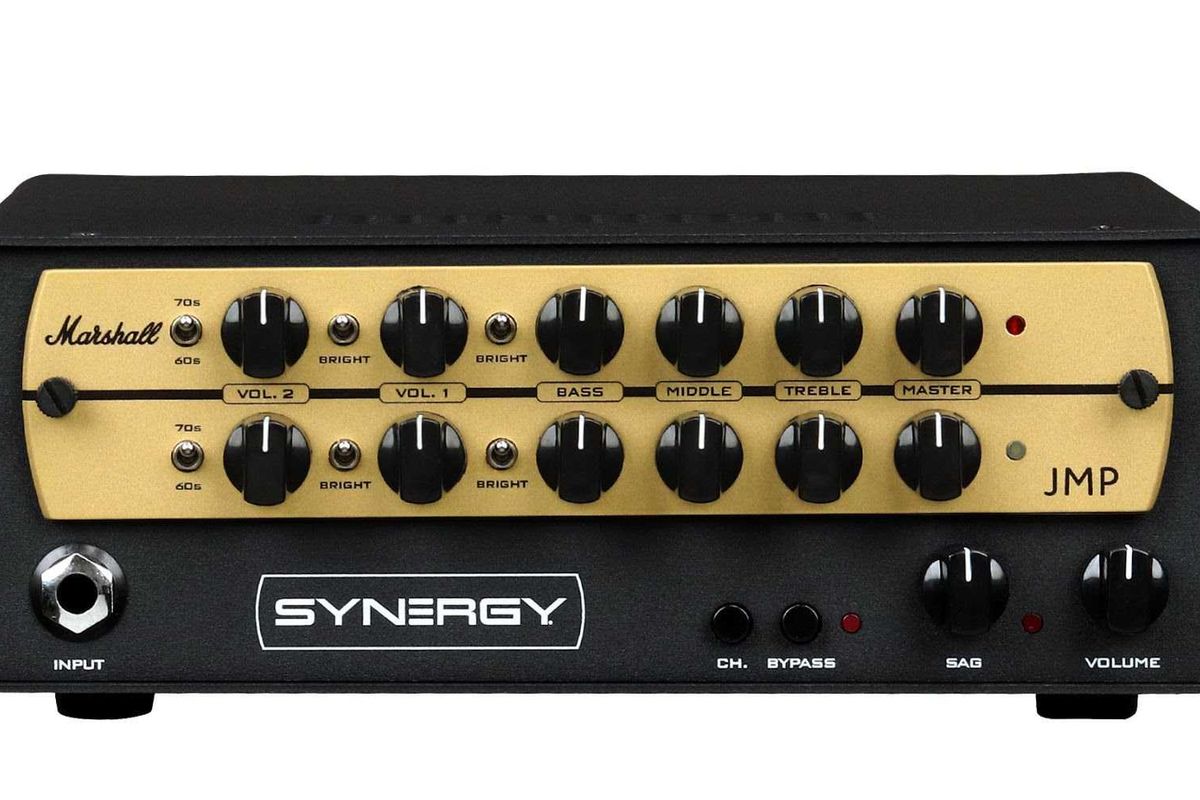
Synergy Amps today announced the release of the Marshall JMP Preamp Module, developed in partnership with Marshall Amplification. This all-tube, two channel module delivers the unmistakable growl, touch sensitivity, and dynamic response of the legendary JMP - now in a compact, modular format designed for today’s players.
From Eric Clapton and Jimi Hendrix to Jimmy Page, Eddie Van Halen, and Angus Young, the Marshall JMP amps have shaped the sound of rock for generations. With the new Synergy JMP module, guitarists can now harness that iconic Plexi tone at any volume, with the flexibility of Synergy’s modular system.
The JMP has always been about raw energy and expressive touch, and now players can access that authentic tone through the Synergy platform - without compromise.
The JMP module captures every nuance of the classic circuit with the following features:
- Dual 12AX7 preamp tubes for real-tube harmonics.
- Two independent channels with Volume 1, Volume 2, Bass, Middle, Treble, and Master controls.
- 1960s and 1970s voicing switches to replicate era-specific JMP tones.
- Four Bright switches to fine-tune treble response.
- Cathode Select switch for classic input tube configurations.
- An innovative “0-watt power amp” phase inverter design that replicates the feel and dynamics of a cranked Marshall head.
With the Synergy system, players can build their ultimate all-tube rig without sacrificing authenticity with modules from the world’s most coveted amp designers - Friedman, Soldano, Bogner, Fryette Engl, Diezel, Pavey, Dr. Z and now the most famous of them all – Marshall.
Pricing & Availability
The Synergy Marshall JMP Preamp Module is available beginning September 26, 2025, at an MSRP of $399.99.
For more information, visit www.synergyamps.com
Limited Edition Orange Amplifiers Rocker 15 & 32
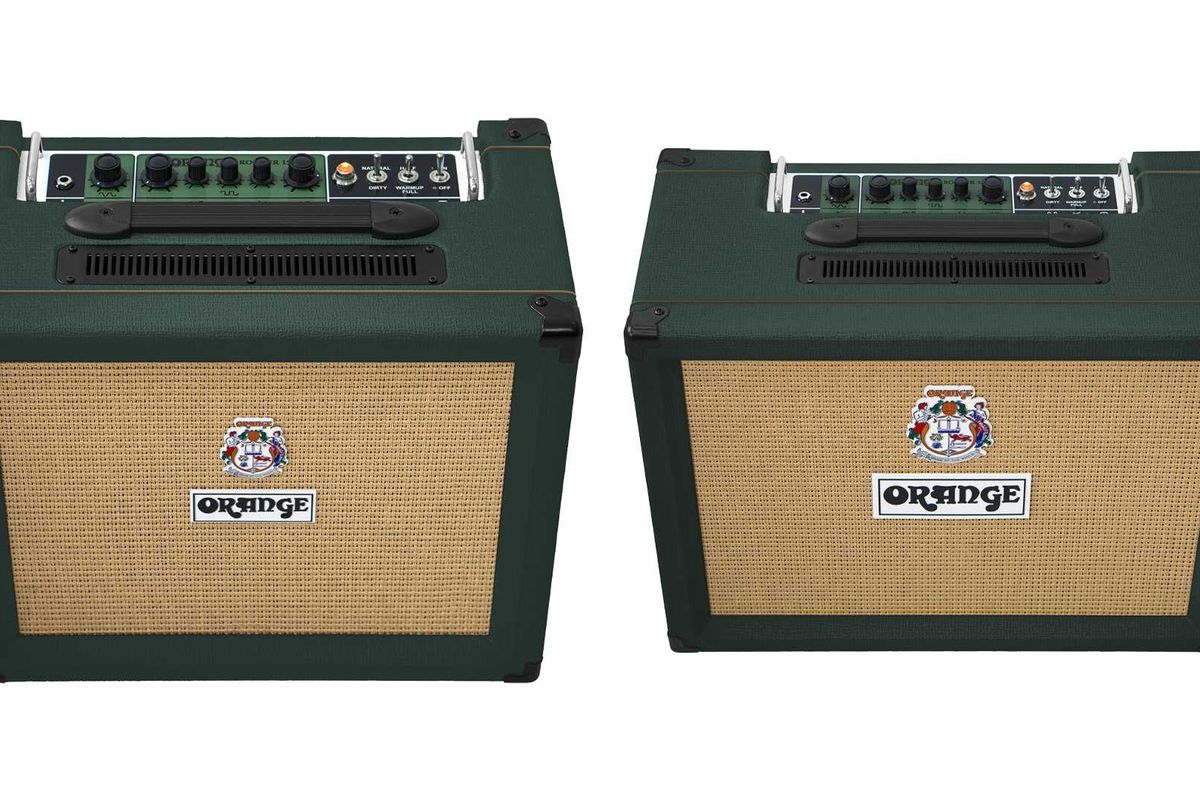
The Rocker 15 & 32, Orange Amplifiers’ amps for all occasions, are now available as a special Limited Edition in eye-catching British Racing Green featuring CELESTION G10N-40 speakers. Each combo comes with a Certificate of Authenticity, signed by Cliff Cooper, CEO and Founder of Orange Amps.
Both the Rocker 15 & 32 are deceptively versatile combos, suitable for many different venues and countless music genres. They are small, portable, two channel bedroom-friendly, all-valve amps you can legitimately gig with.
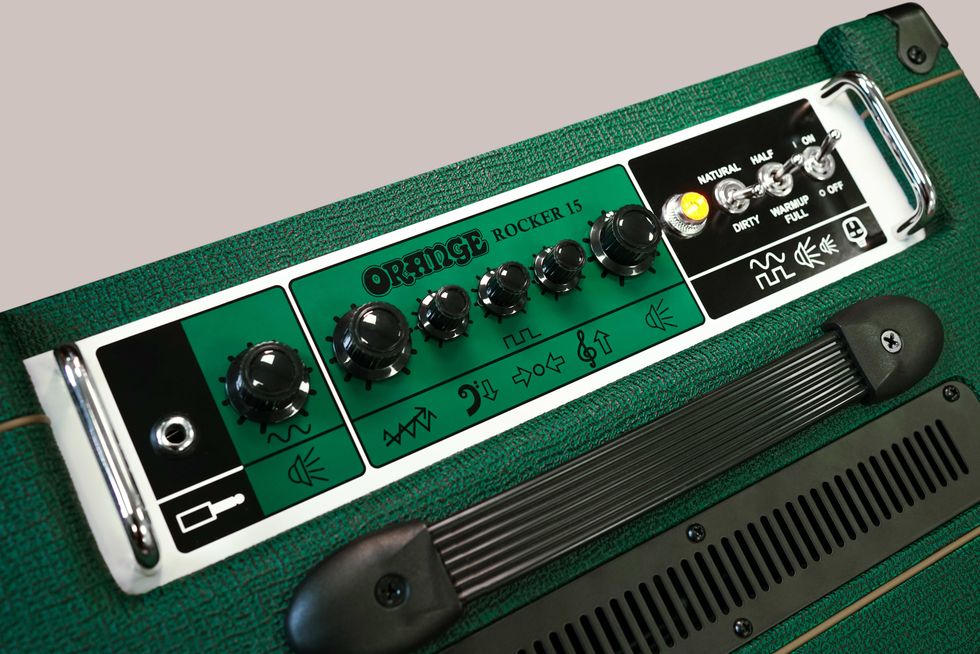
The small, two channel, all-valve Rocker 15 features a CELESTION G10N-40 speaker and beefy transformers for a potent delivery, which takes full advantage of its EL84 output section. Capable of 0.5,1,7,or 15 Watts of output, the portable combo, with a miniature footprint, oozes warm compression and fat, full tone. The twin channel output features a twist; the Natural channel is a purist’s dream voiced to bring out the ‘natural’ sound of the instrument being played, while the more familiar Dirty Channel offers plenty of British crunch. Its full and half-power switch, combined with the bedroom and headroom switch, means it is a home friendly amp that can be legitimately gigged with. It is available in a strictly limited quantity of three hundred units, worldwide.
Full of classic Orange mojo, the true stereo Rocker 32 has been fitted with two CELESTION G10N-40 speakers for a well-balanced tone with satisfying, deep lows right through to a well-defined top end. Its clever circuitry gives the amp a wide sound spread, while the stereo effect loop opens up limitless possibilities and makes it the perfect pedalboard partner. In particular, the ‘wet/dry’ option allows guitarists to play their effects through one speaker and the clean guitar tone through the other. The Natural channel clearly articulates every nuance of all guitar, pickup and pedal combinations. It has plenty of clean headroom and loves to be hit with overdrive and distortion stomps. The Dirty Channel with its balanced three band EQ, gain and master volume controls, offers a multitude of different British crunch flavours. Plus, it can be set to clean too! The handy half power mode can switch the Rocker 32 from the full 30 Watts down to a home friendly 15 Watts. Only eighty units will be available worldwide.
To find out more about the special Limited Edition Rocker 15 & 32 in British Racing Green, please go to www.orangeamps.com.
Engl Unleashes the Ravager IR Head and E412XXLK with Eminence Karnivore
ENGL Amplifiers proudly introduces the RAVAGER IR, a 20-watt, 2-channel tube amp that blends vintage tone with modern technology. Designed for musicians seeking a versatile, portable solution, the RAVAGER delivers exceptional sound quality in a compact lunchbox-style chassis.
The E725 RAVAGER use 12AX7/ECC83 in the preamp and EL84 in the poweramp section, producing dynamic, harmonically rich tones. Its dual-channel design provides pristine cleans and aggressive overdrive, making it ideal for stage, studio, or home use.
A key feature is its built-in IR Loader, enabling users to use four impulse responses (IRs), three of them can be loaded via USB for unparalleled cab simulation. This makes recording and silent practice effortless while delivering a professional sound. The amp is also equipped with an XLR output for live and studio applications, along with a headphone out for private practice. Additionally, the integrated Power Soak feature allows users to reduce output power for cranked tube tones at lower volumes, perfect for home or studio environments.
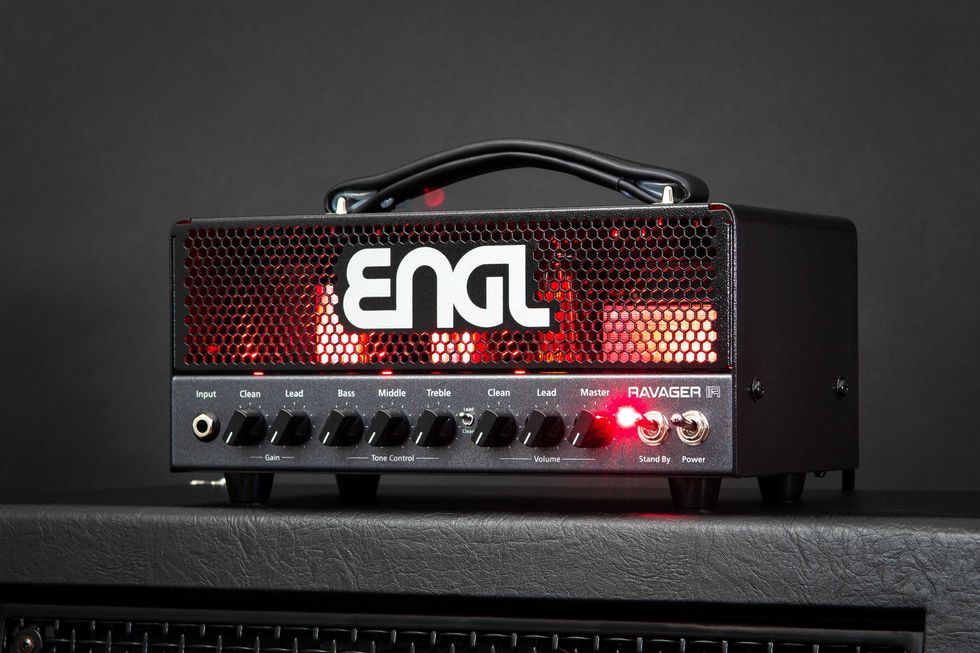
Key Features:
- 20W, 2-channel tube amp
- ECC83 preamp & EL84 power amp section for authentic tone
- Built-in IR Loader with four Irs (three customizable slots)
- USB connectivity for easy IR management
- Headphone output for silent practice
- XLR direct output for live and recording setups
- Integrated Power Soak for adjustable power (20 Watts, 5 Watts, 1 Watts, Speaker off) ∙ Compact, portable lunchbox design
E412XXLK Eminence Karnivore
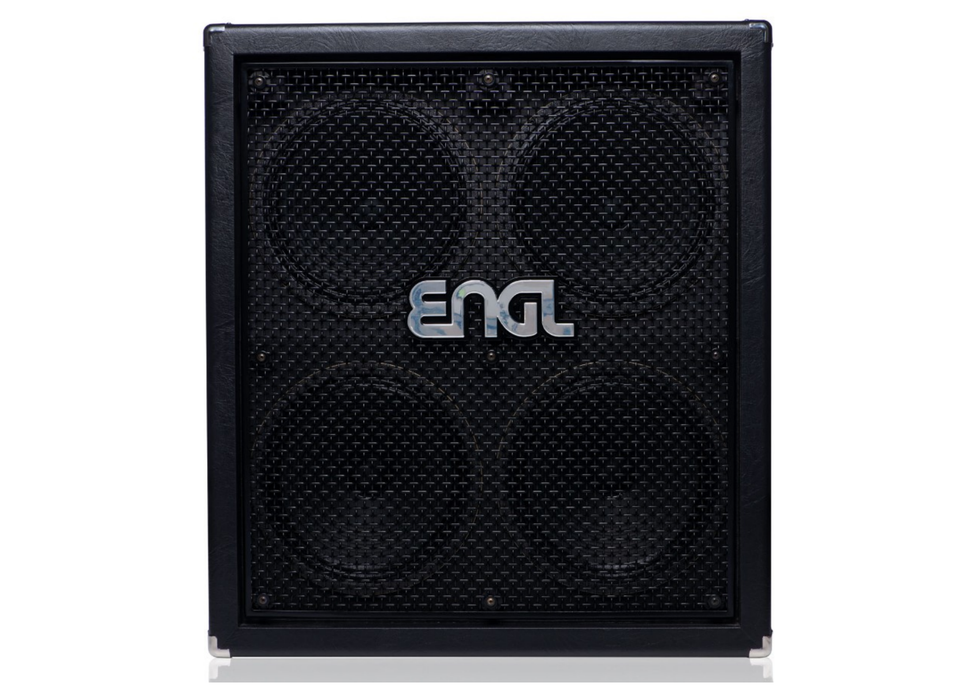
Engl unveils the new E412XXL with Eminence Karnivore speakers — a powerhouse 4x12"cabinet built to meet the demands of modern high-gain players. This updated version of the legendary E412XXL combines Engl’s precision-engineered oversized enclosure with the aggressive tonal character of the Eminence Karnivore speakers, delivering bone-crushing low end,razor-sharp attack, and exceptional clarity at high volumes.
Features
- Four Eminence Karnivore 12" Speakers
- Designed for modern metal and hard rock, offering tight bass, cutting mids, and controlled top end for maximum definition under high gain.
- Oversized Straight Cabinet Design
- Deep enclosure for massive low-frequency response and room-filling projection.
- High Power Handling
- 240-watt total power at 8 ohms, ready to handle the most powerful tube heads without breaking a sweat.
- Tour-Grade Construction
- Robust birch plywood build, reinforced corners, metal grille, and heavy-duty casters for reliable road use.
- Huge, crushing sound ideal for drop tunings and extended-range guitars ∙ Precise articulation at high volumes for tight rhythm work
- Designed from the ground up by Kristian Kohle and the Eminence engineering team, the Karnivore delivers all the bite and all the meat
Availability
The new E412XXL with Eminence Karnivore is available hrough authorized Engl dealers and distributors worldwide.
Rig Rundown: My Chemical Romance
After their Covid-delayed, smash-success reunion tour a few years back, My Chemical Romance plotted the Long Live the Black Parade North American stadium tour this past summer.
PG’s Chris Kies joined the run at Soldier Field in Chicago, and before the show, he rendezvoused with techs James Bowman, Josh Schreibeis, and Joe Saucedo—who handle Frank Iero, Ray Toro and Mikey Way’s rigs, respectively—for a look at the axes, amps, and effects the heavy-hitting emo titans are using these days.
Brought to you by D’Addario.
Dose of Castedosa
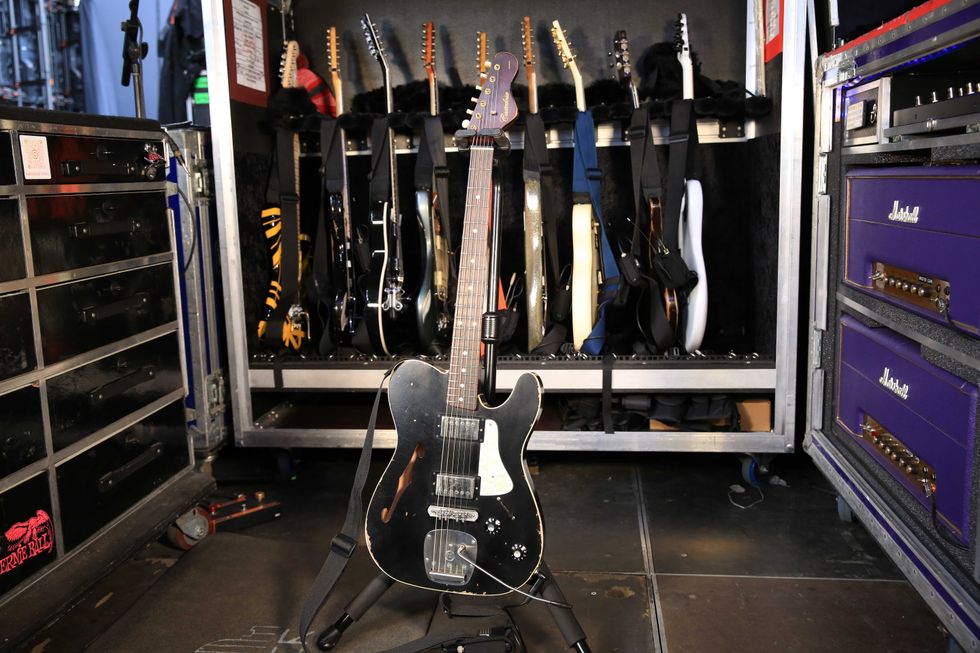
After Iero got this Castedosa Marianna Semi Hollow, it became the show starter for this summer’s tour. This, and all other guitars, are tuned down a half step with Ernie Ball Paradigm strings (.011–.052).
Bury Me in White
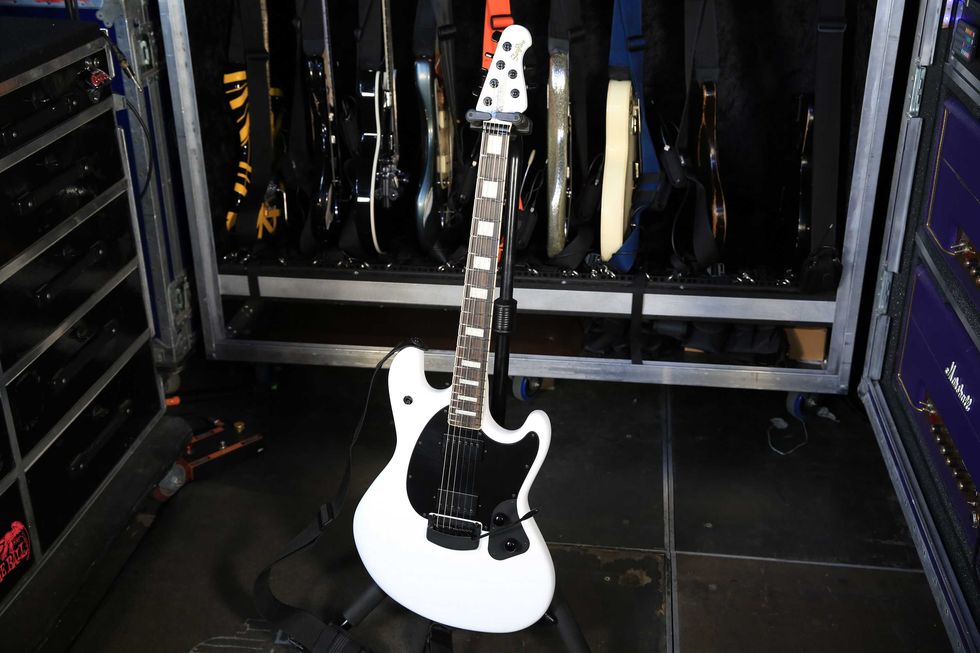
Iero favors Ernie Ball StingRays like this one, in matte “Stormtrooper” white. The only mod on this guitar is the addition of Luminlay dots on the side of the neck.
One and Done
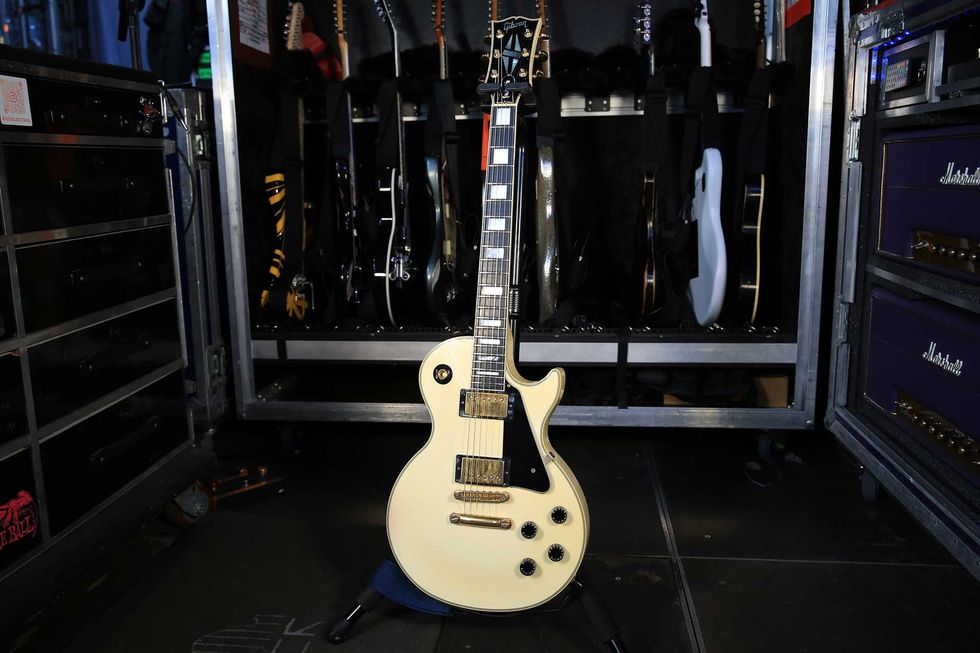
This 1992 Gibson Les Paul gets played only for the title track off the band’s 2006 record, The Black Parade.
Under Pressure
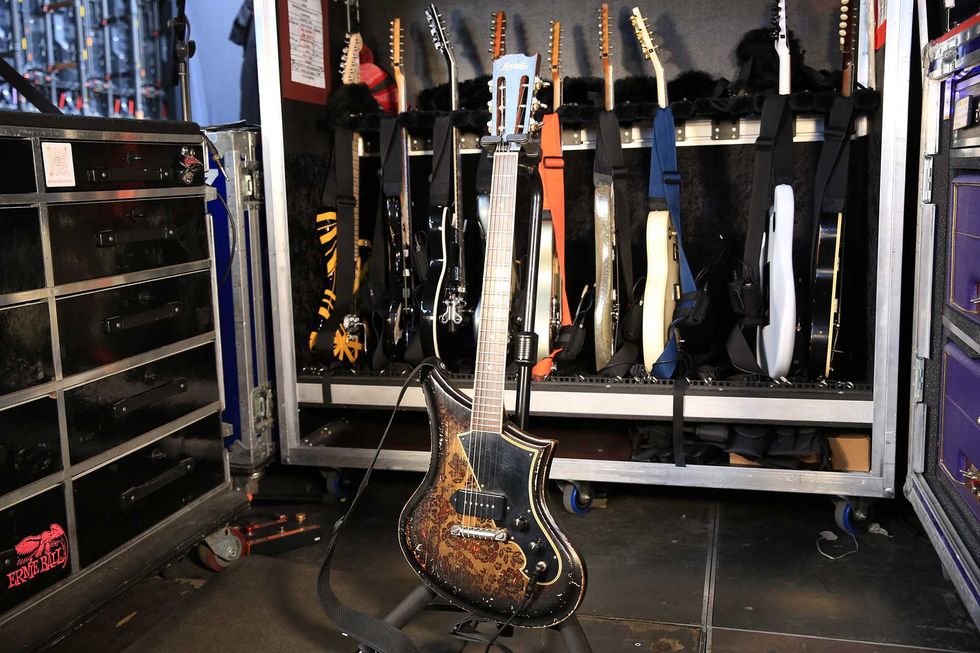
This tiny, light Abernethy Guitars electric takes Bowman forever to string. If anyone has tips, send them his way.
Purple Reign
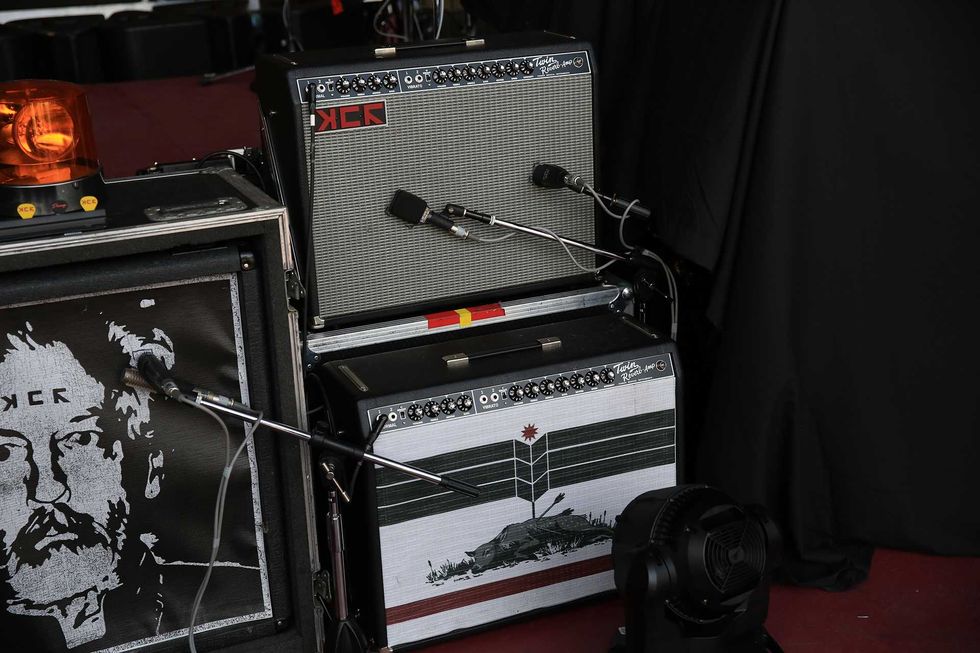
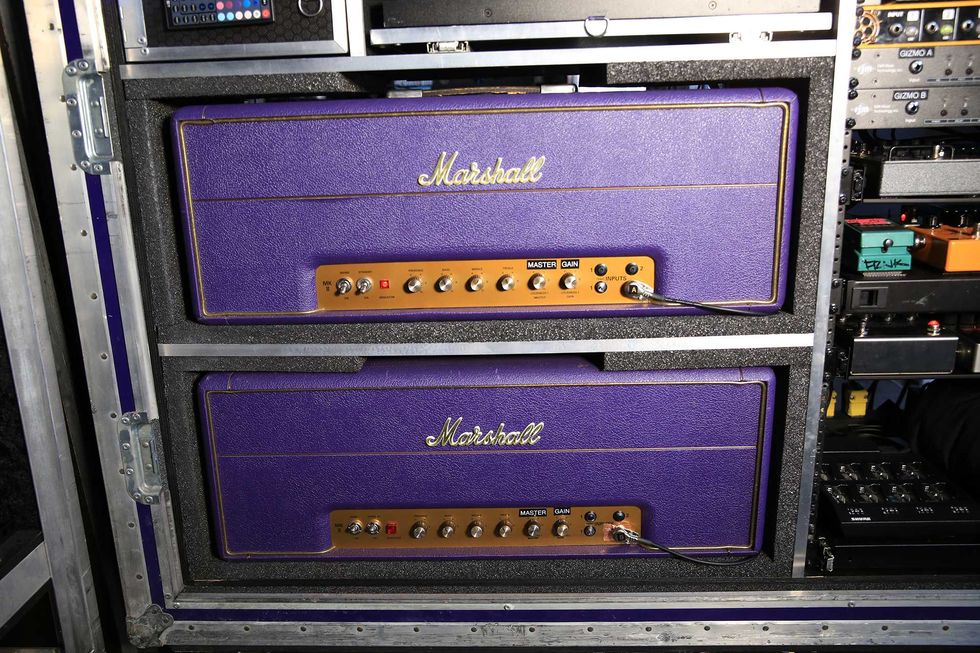
After using Marshall Super Lead heads with the Dookie mod on the previous tour, Iero found these slick purple heads and brought them to Dave Friedman to match the Dookie specs and add some EQ tweaks. These two, a main and backup, are responsible for the bulk of Iero’s sounds.
A Fender Twin Reverb onstage is responsible for “small-amp sounds,” while a Twin Reverb Tone Master underneath it sends a clean DI signal for the mix in Iero’s in-ear monitors.
Welcome to the Rack Parade
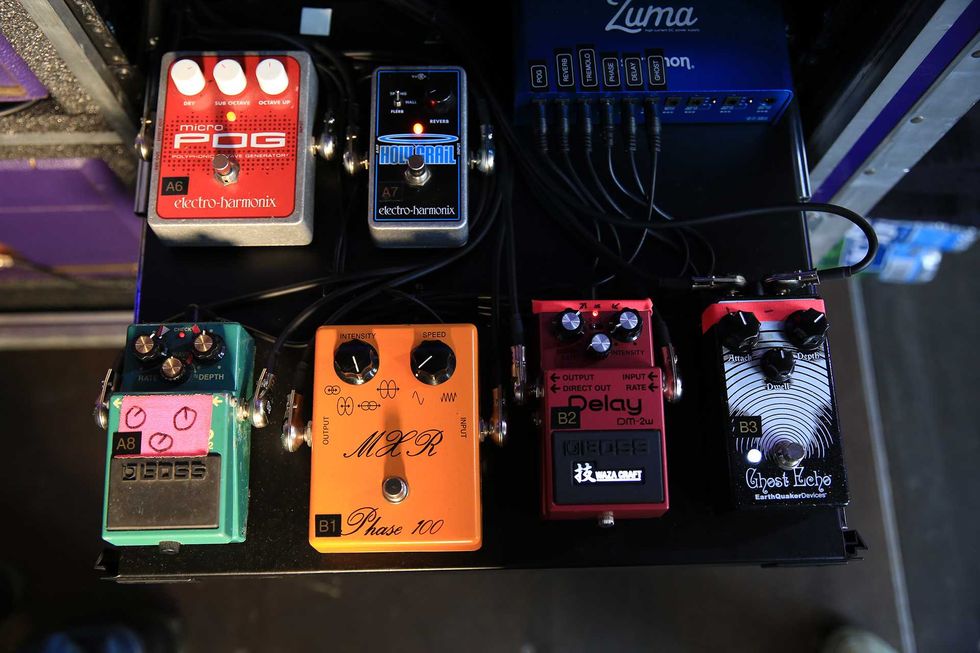
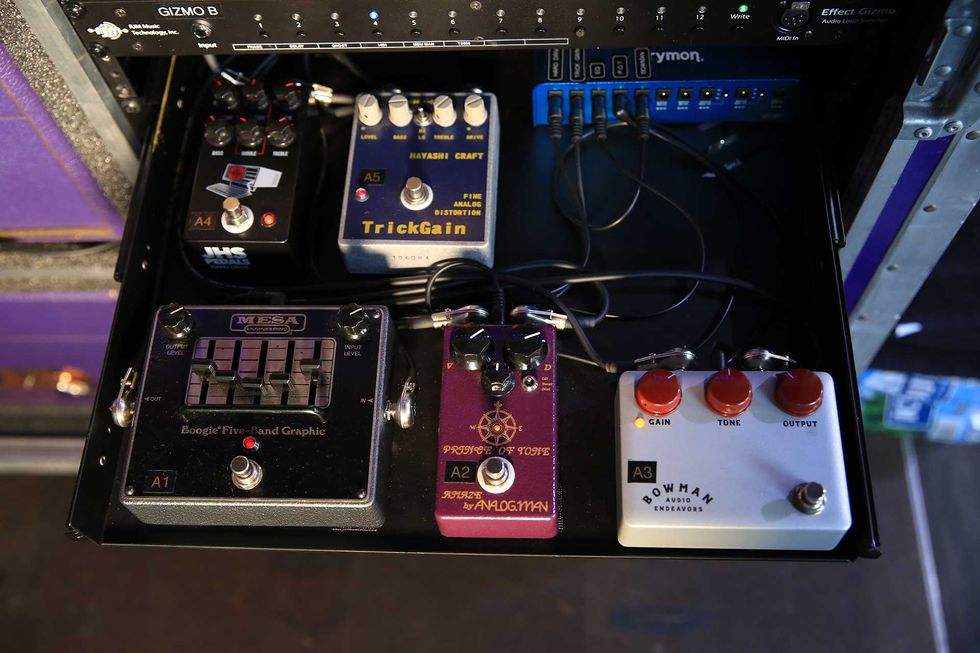
Iero’s backstage rack includes three main racks of effects, all powered by Strymon Zumas.
The first carries a Mesa Boogie 5-Band Graphic EQ, Amaze by Analogman Prince of Tone, Bowman Audio Endeavors Bowman Overdrive, JHS Hard Drive, and Hayashi Craft Trick Gain.
Drawer two is about modulation, and includes a Boss TR-2, MXR Phase 100, Boss DM-2W, EarthQuaker Devices Ghost Echo, EHX Micro POG, and EHX Holy Grail.
The last drawer bears a Jackson Audio Twin Twelve, EHX Deluxe Memory Man, Ibanez Tube Screamer Overdrive Pro, and Bowman Audio Bellyacher.
Toro’s Top
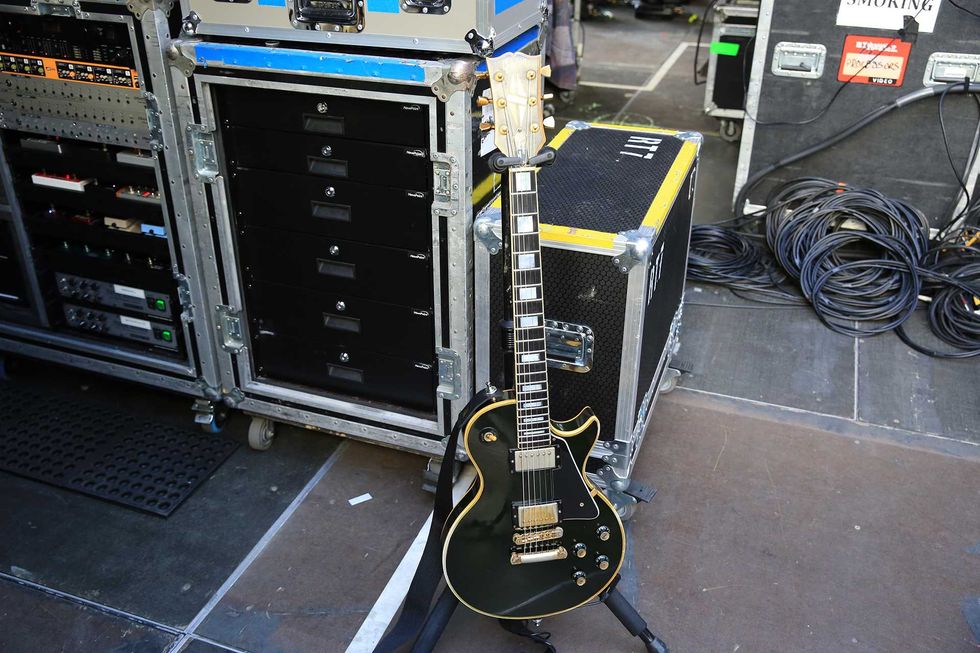
Toro plays this 1978 Les Paul to start the show, including tracks “The End.,” “Dead!,” and “House of Wolves.” He runs .011–.052-gauge strings on all his guitars.
Second Fiddle
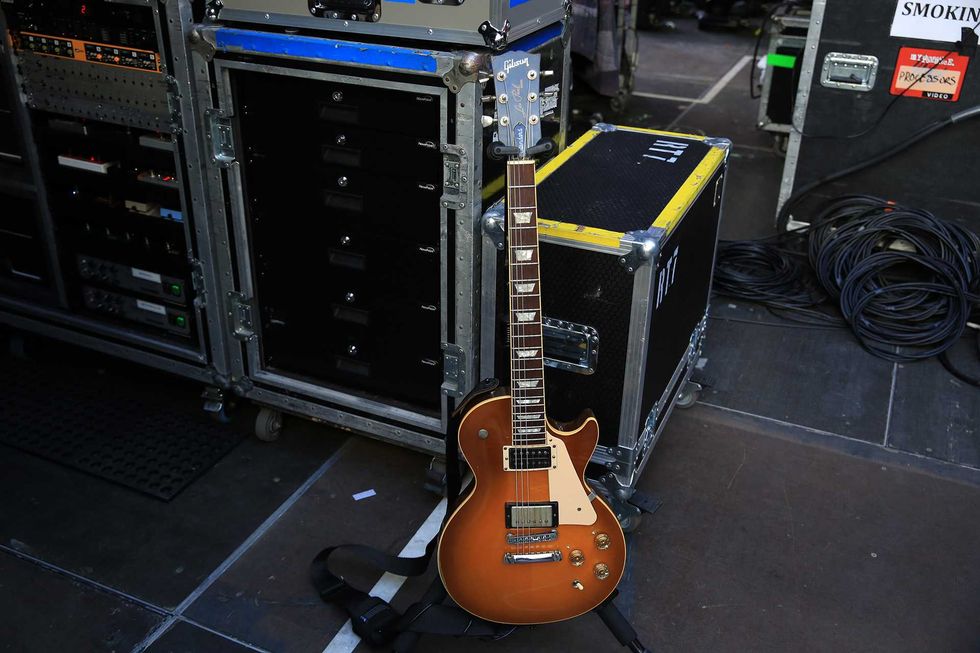
This sunburst Les Paul has been outpaced by the black ’78, but it still comes out for “Welcome to the Black Parade” and “Famous Last Words.”
Super 6
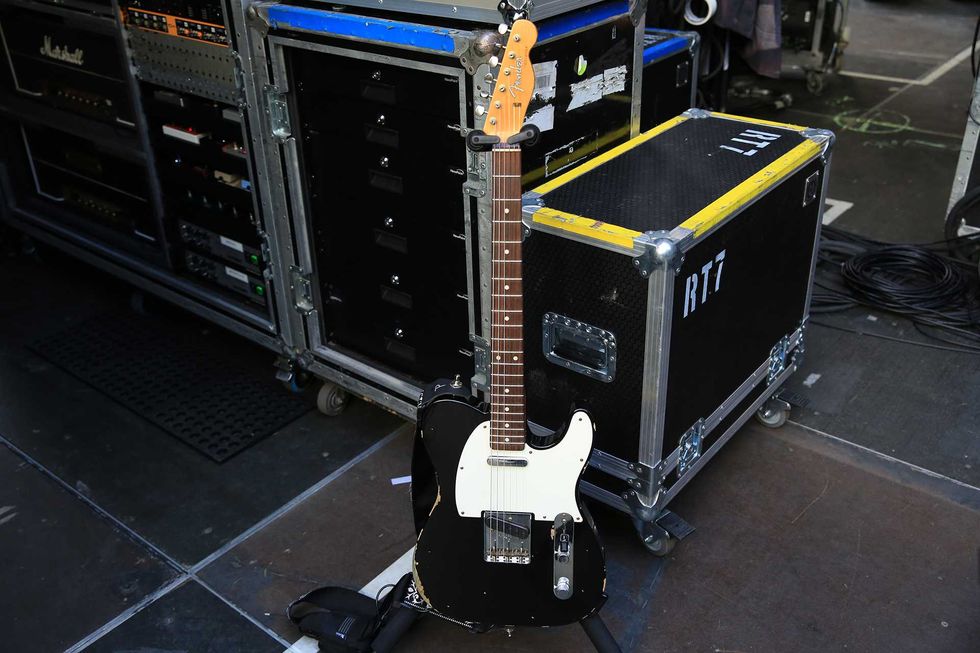
This 2005 Fender Custom Shop Telecaster sees action on six tunes in the band’s set.
Ray Toro’s Amps
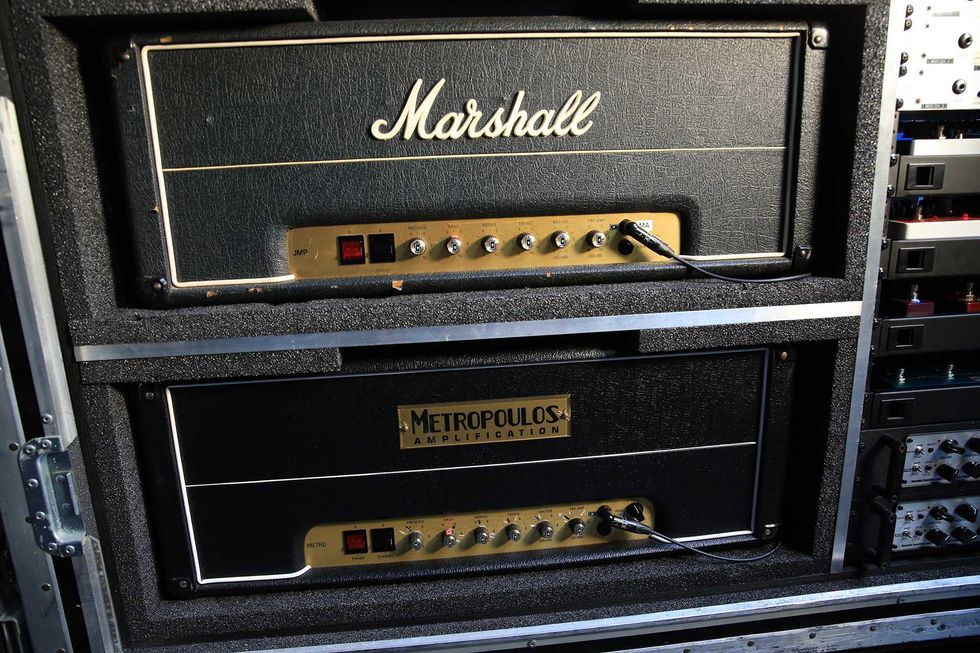
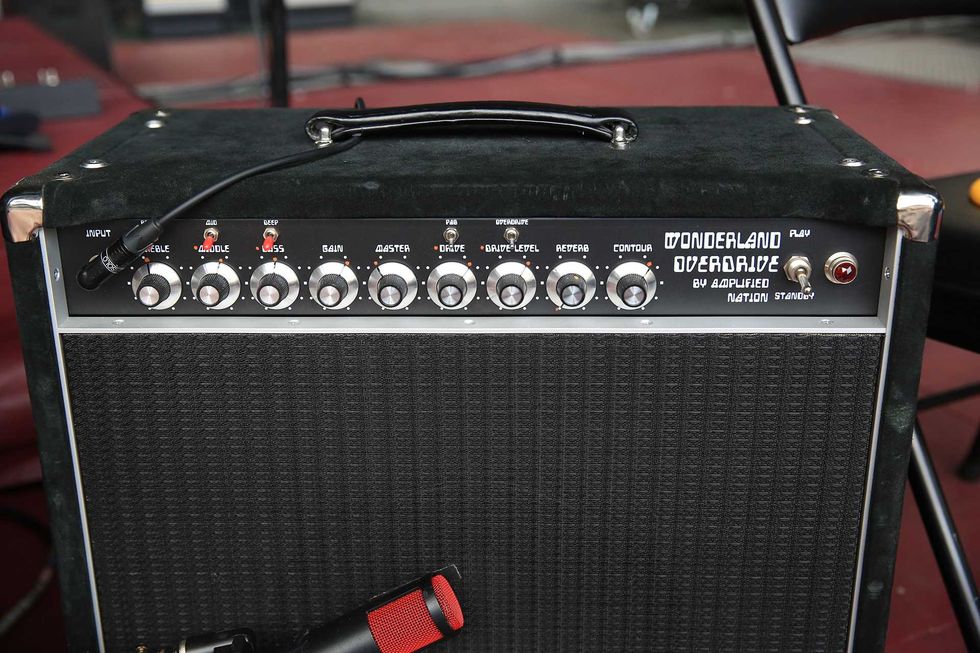
A head combo of a Marshall JMP and Metropoulos Amplification Metro (both running into Fryette PS-100s) comprise Toro’s main tones, while an Amplified Nation Wonderland Overdrive 1x12 combo is used for solo sounds, and a Fender Deluxe Reverb handles cleans. Toro’s signal is pumped through two 4x12 cabs—one Marshall, one Bad Cat.
Ray’s Really Rockin’ Rack Rig
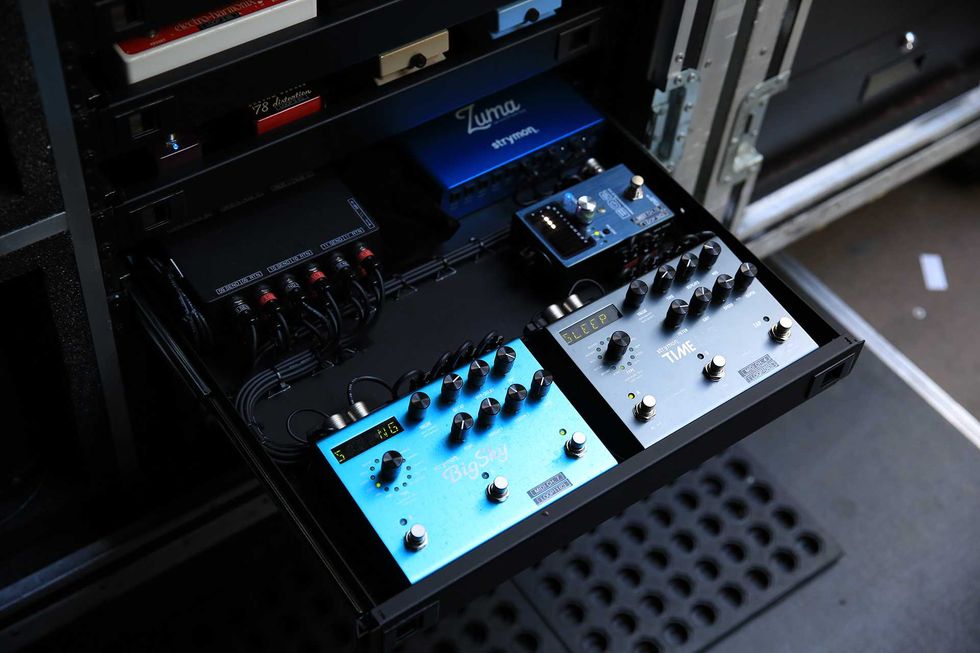
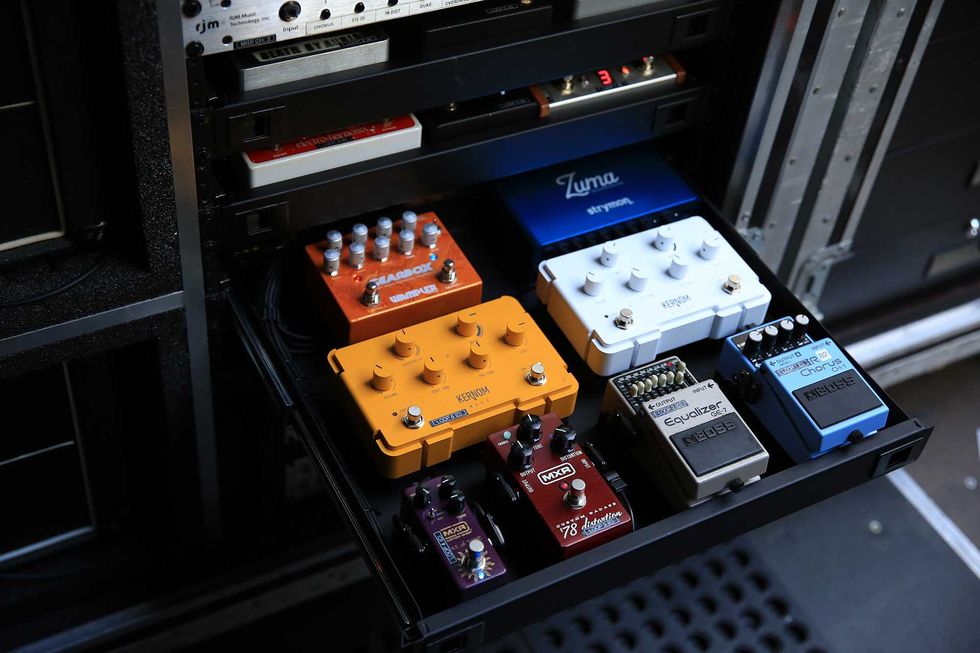
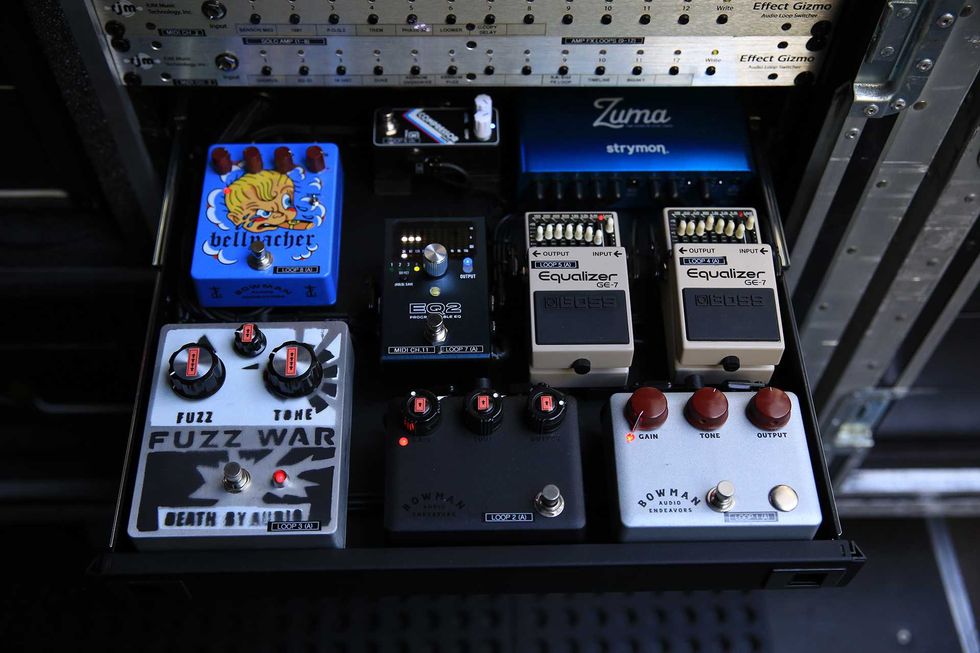
A Shure Axient wireless system sends his guitar’s signal to this system backstage, where it hits a Radial JX44 and a pair of RJM Effect Gizmos.
One drawer holds an MXR Duke of Tone, MXR Custom Badass ’78 Distortion, Boss GE-7, Boss CH-1, Kernom Moho, Kernom Ridge, and Wampler Gearbox.
In the next are two Boss GE-7s, two Bowman Overdrives, a Death by Audio Fuzz War, a Source Audio EQ2, a Bowman Bellyacher, and a Keeley Compressor Mini.
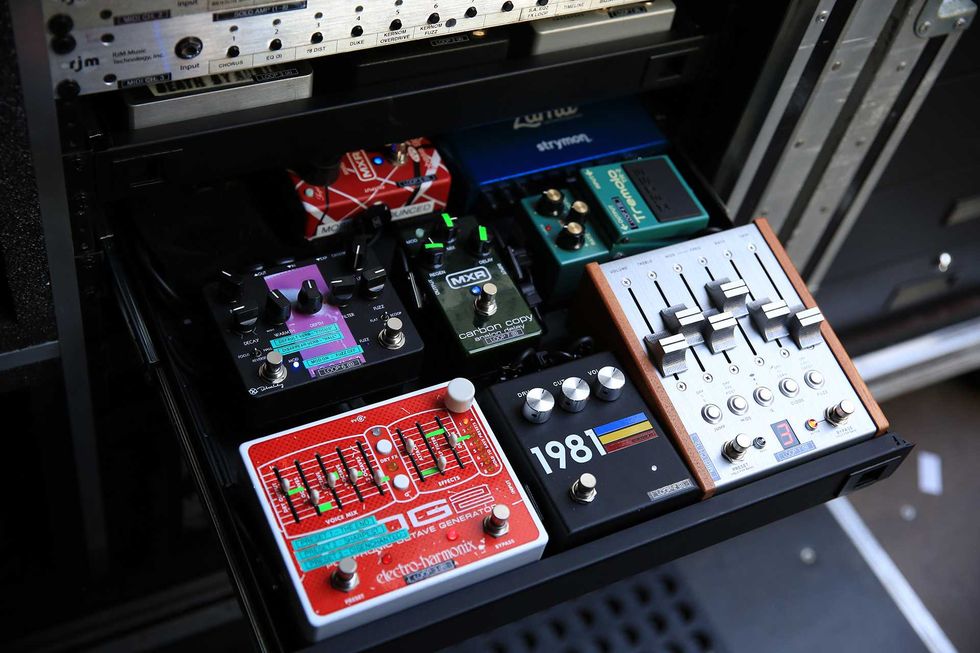
The third shelf is home to an EHX POG2, 1981 Inventions DRV, Chase Bliss Preamp MK II, Boss TR-2, MXR Carbon Copy, Keeley Loomer, and MXR EVH Phase 90.
A fourth level hosts a Strymon TimeLine, Strymon BigSky, and Source Audio EQ2.
Out onstage at his feet, Toro keeps a pedalboard with a TC Electronic PolyTune, a custom RJM Mastermind PBC/6X, Ibanez TS808, Bowman Audio Bowman Overdrive, EHX Micro POG, Boss TR-2, MXR Carbon Copy, and Strymon BigSky.
Strymon Zumas keep everything chugging along.
Comeback Kid
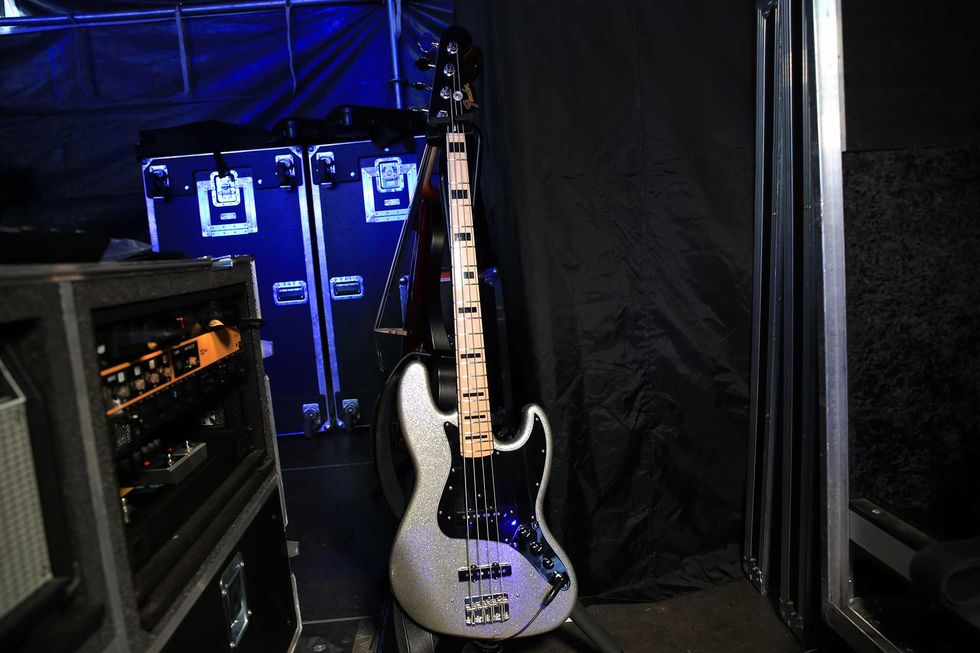
This silver-sparkle Fender Jazz bass was built for the band’s reunion tour, intended to mimic Way’s earlier signature model. It’s since been treated to more affordable Mexico-made production runs. Way runs Ernie Ball Hybrid Slinky strings (.045–.105) and plays with Clayton triangle picks.
Red!
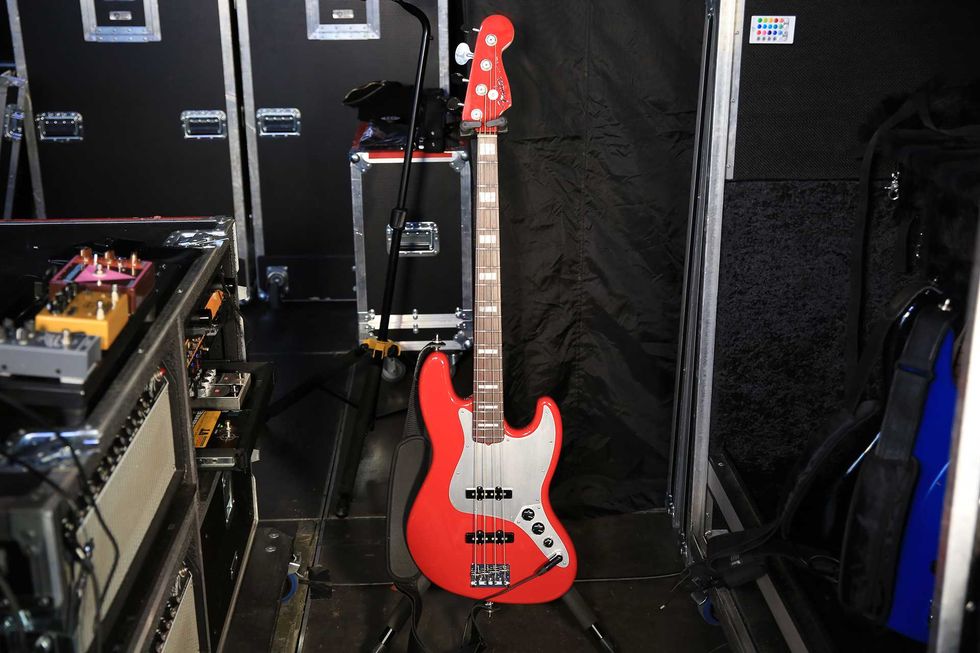
This eye-catcher was made by Fender’s Brian Thrasher, and is equipped with pickups from the Adam Clayton signature bass. Way relies heavily on this one, then switches to an identical one for down tunings.
Dodger That
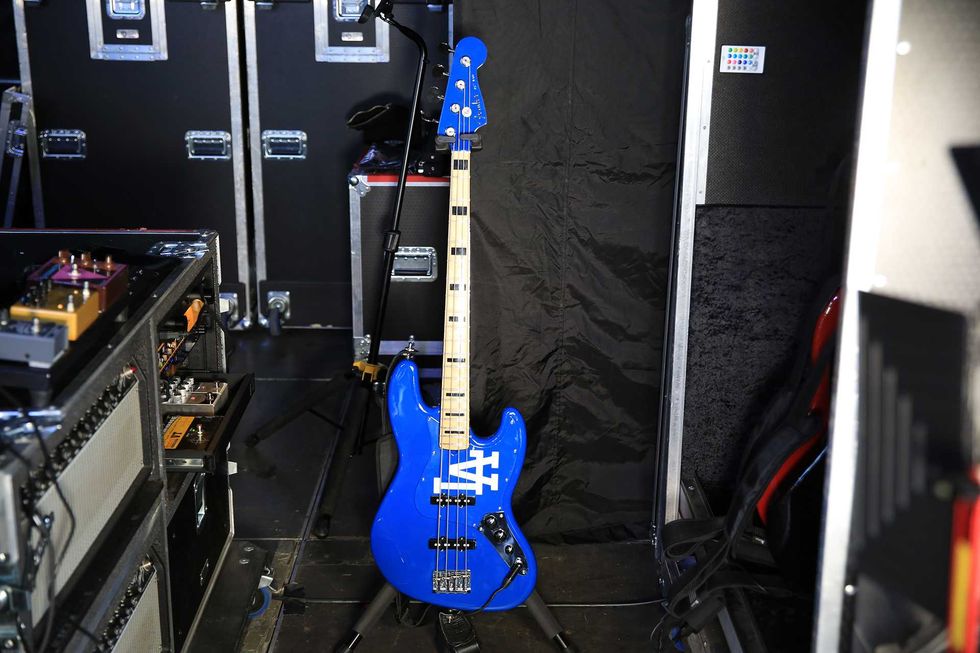
Way secured permission from Major League Baseball and the Los Angeles Dodgers to use the team’s exact hue of blue on this custom instrument.
Mikey Way’s Amp
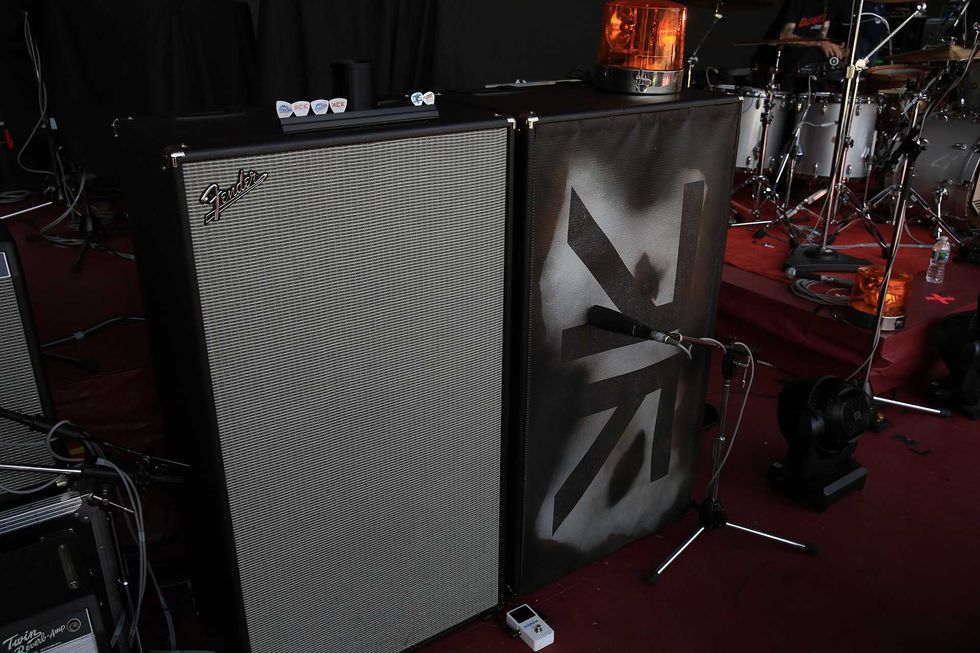
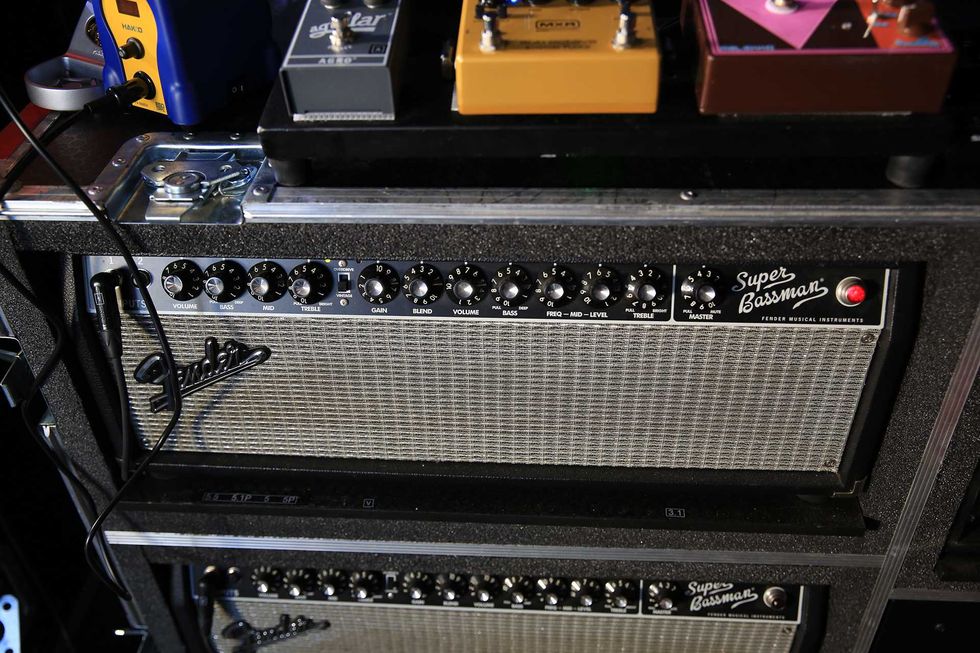
Way runs through a Fender Super Bassman head into matching 8x10 cabs, with a DI signal also running to front of house.
Mikey Way’s Effects
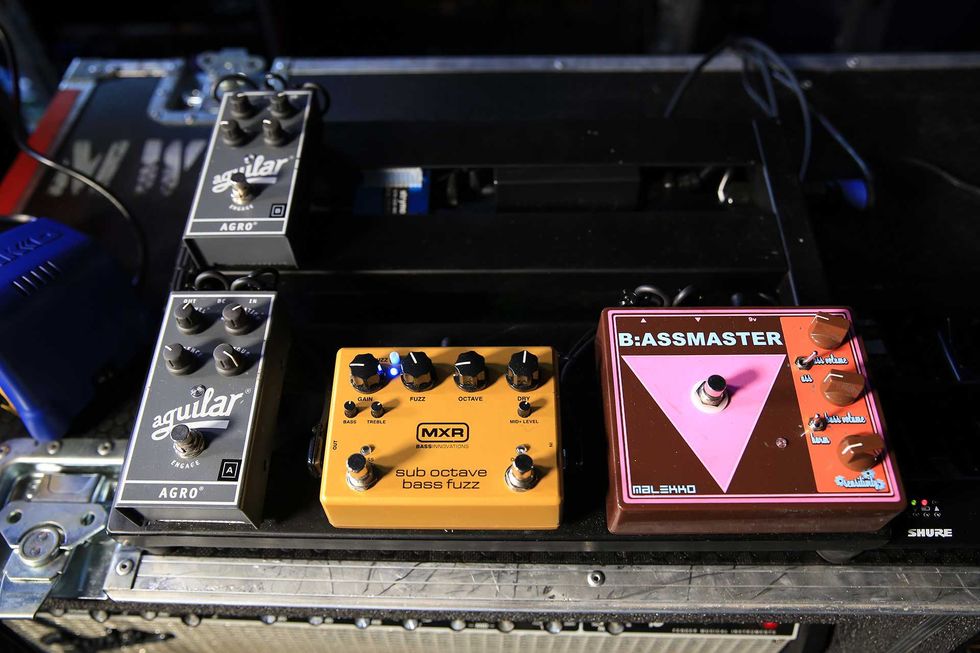
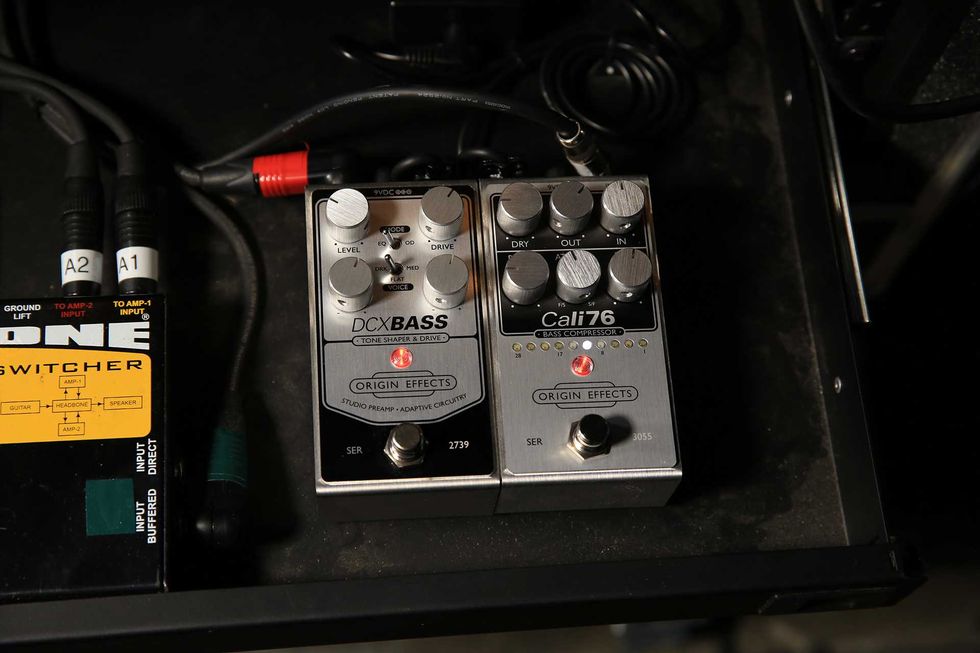
Way keeps things simple. Along with an Origin Effects DCX Bass and Cali76 set to push his Super Bassman, his setup includes a pair of Aguilar Agros, an MXR Sub Octave Bass Fuzz, and a Malekko B:assmaster.
Rattlesnake Cable Company Launches Custom Cable Looms
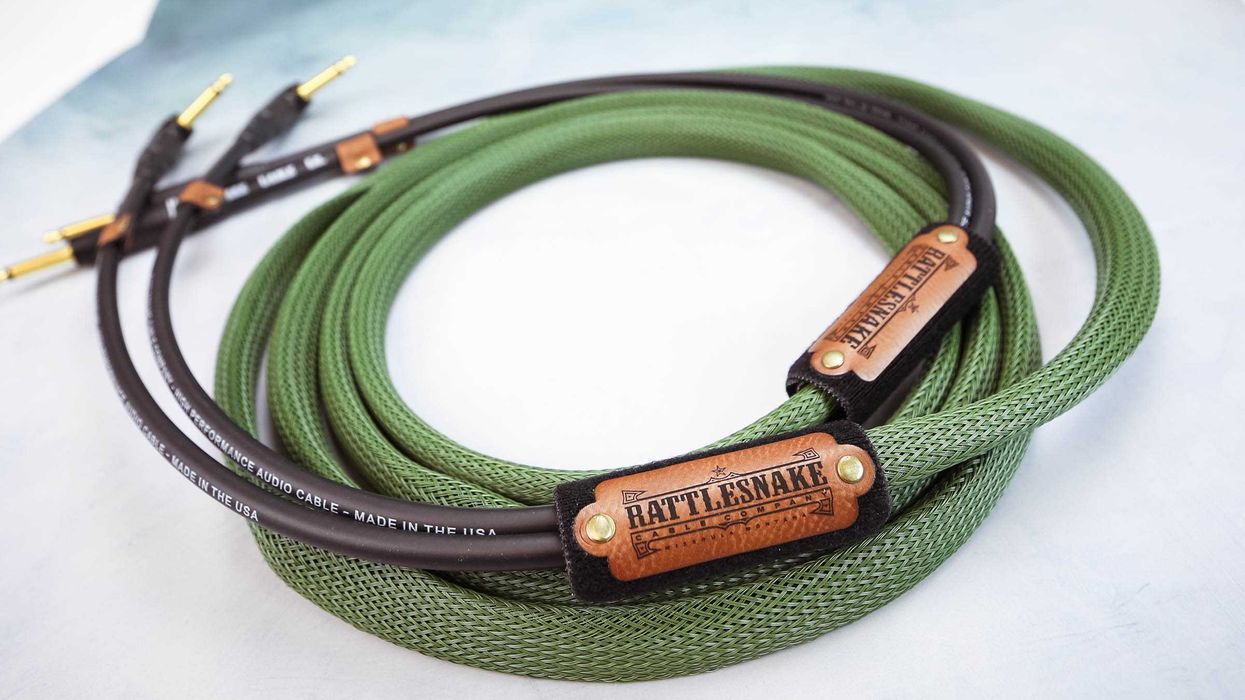
Rattlesnake® Cable Company, renowned for its high-quality, handcrafted instrument cables and audio gear, proudly announces the official launch ofits Custom Cable Looms. Designed for musicians, studios, and audio professionals, theselooms deliver an organized, reliable, and performance-ready solution that transforms theway rigs are set up and used.
What Is a Custom Cable Loom?
Rattlesnake’s Custom Cable Looms are handcrafted bundles that combine multiple cables intoa single, consolidated harness - tailored to the customer’s exact setup. Each loom is carefullymeasured, built, and wrapped in our signature rugged weave, ensuring clarity in the studio,confidence on stage, and unmatched durability.“Custom cable looms are about more than organization - they’re about elevating theprofessional experience for musicians and engineers,” said Hank Donovan, founder ofRattlesnake® Cable Company. “By streamlining setup, reducing clutter, and guaranteeingreliable connections, our looms give artists peace of mind so they can focus fully on their craft.”
Benefits of Rattlesnake® Custom Cable Looms:
- Efficiency & Speed – Faster setup and teardown with perfectly measured, consolidatedcables.
- Professional Presentation – Clean, organized rigs that look as good as they sound.
- Durability & Reliability – Premium U.S.-milled cables, hand-assembled in Missoula,Montana.
- Tailored Design – Each loom is built one at a time to match the customer’s exact rigneeds.
- Reduced Cable Clutter – Simplifies routing and reduces wear on gear.
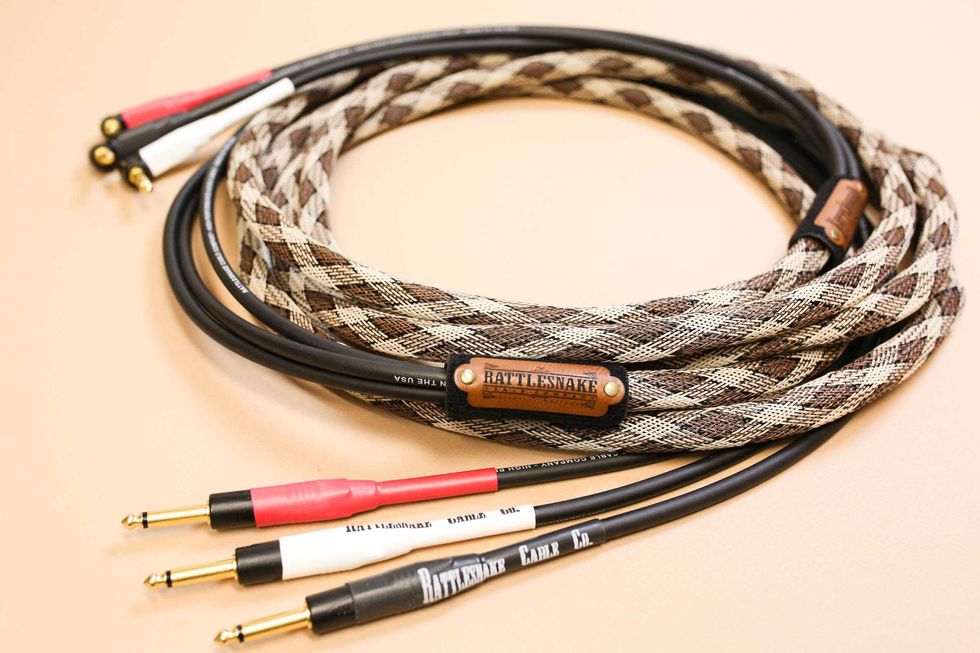
Each loom is a collaboration between Rattlesnake and the customer, ensuring measurements and connections are designed specifically for their unique configuration. This personalized build process reinforces the company’s mission: craftsmanship at the core, confidence in every connection.
Availability
Rattlesnake® Custom Cable Looms are available now and can be ordered directly through the company’s website. Pricing is based on customer specifications, with consultations available for musicians and studios seeking the perfect solution.
View more and request your custom loom here: https://www.rattlesnakecables.com/custom-looms/
Stompboxtober 2025: Keeley Electronics
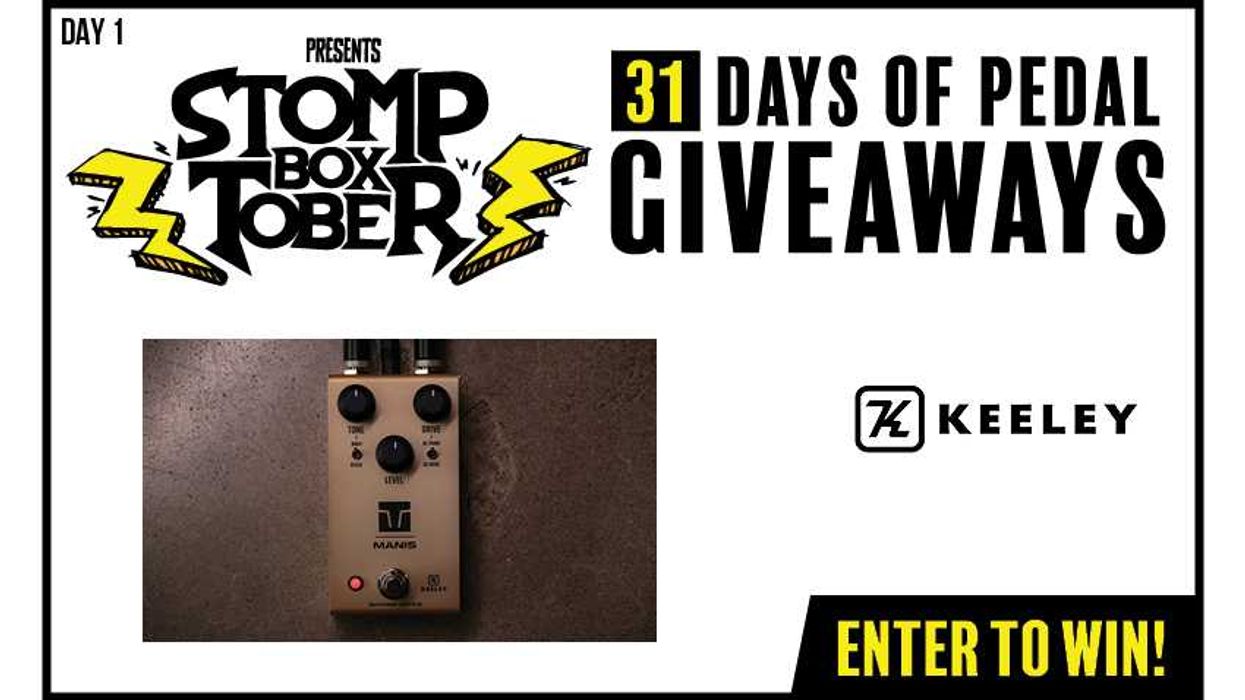
Stompboxtober is back for 2025! Come back all month long for your chance to WIN daily pedal giveaways. Today's giveaway is the Keeley MANIS Overdrive!
Stompboxtober 2025 - Win Pedals All Month Long!
Keeley Electronics MANIS Overdrive
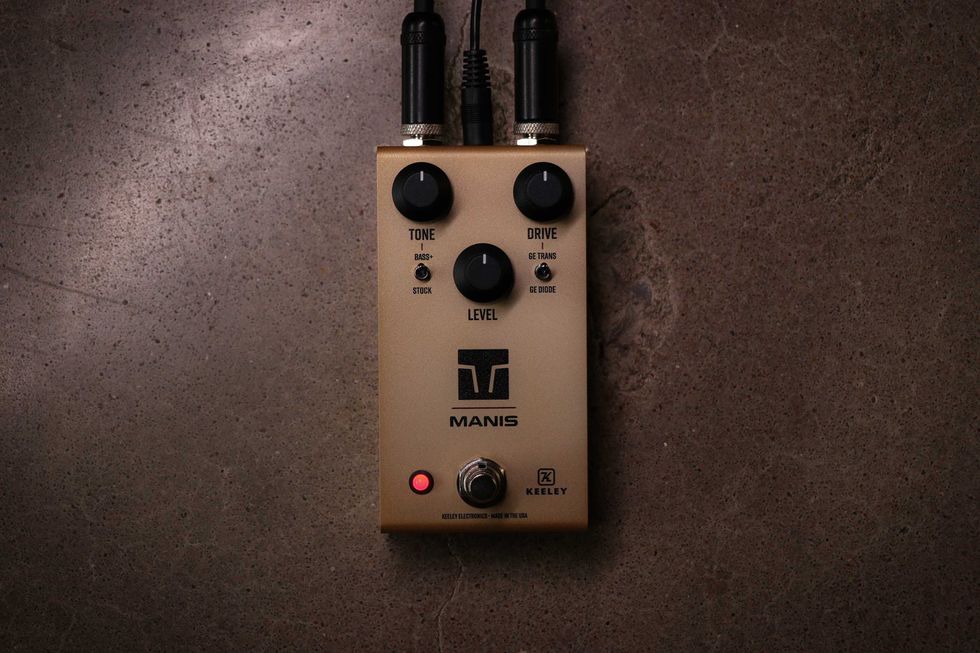
The Keeley MANIS Overdrive is a bold evolution of the mythical transparent drive, blending NOS germanium transistors and diodes for unmatched warmth, compression, and grit. With switchable voicings and dynamic touch response, it’s a tone-sculpting weapon built for players who demand both clarity and rich harmonic character in one pedal.
Price : $199.00

Keeley Manis Overdrive Pedal
“After that came Black Sabbath, and after that came Deep Purple”: Donovan believes his track Hurdy Gurdy Man was the original inspiration for both metal and the formation of Led Zeppelin

Through the “similarities” between Glasgow and Liverpool – as well as his perceived connection to the divine, Scottish singer-songwriter Donovan developed a fraternity with The Beatles in the 1960s.
Donovan – full name Donovan Phillips Leitch – would later join the Fab Four on their visit to India in 1968 to practice transcendental meditation; both Donovan and George Harrison shared a fascination with Eastern spirituality, as the story goes.
Their respective experiences on the trip led to the Beatles landmark White Album, and Donovan’s The Hurdy Gurdy Man, which were released in November and October that year.
His album’s title track is a brooding yet groovy mid-tempo song, with counterplay between electric guitar and sitar. And in a new interview with The Telegraph, Donovan details how the track may have paved the way for heavy metal, and even inspired Led Zeppelin.
“Is it possible that this anticipated heavy metal? After that came Black Sabbath, and after that came Deep Purple,” he says.
As he explains, the track featured a performance by John Paul Jones, who would later go on to form Led Zeppelin with Jimmy Page.
“John Paul Jones and Jimmy Page were very strong session guys for me,” says 79-year-old Donovan. “At that period when Hurdy Gurdy Man was released, that’s when those two guys put the band together.
Donovan explains how he doesn’t “want to say I created Led Zeppelin,” but “Let’s say John Paul Jones saw the possibilities.
Whether Hurdy Gurdy Man was a precursor to heavy metal is debatable; its distorted guitar lines certainly suggest it may have had some influence, and it’s worth noting that it predates The Beatles’ Helter Skelter, often regarded as the track which paved the way for the metal genre.
The post “After that came Black Sabbath, and after that came Deep Purple”: Donovan believes his track Hurdy Gurdy Man was the original inspiration for both metal and the formation of Led Zeppelin appeared first on Guitar.com | All Things Guitar.
The Fearless Flyers: Flight School is in Session!
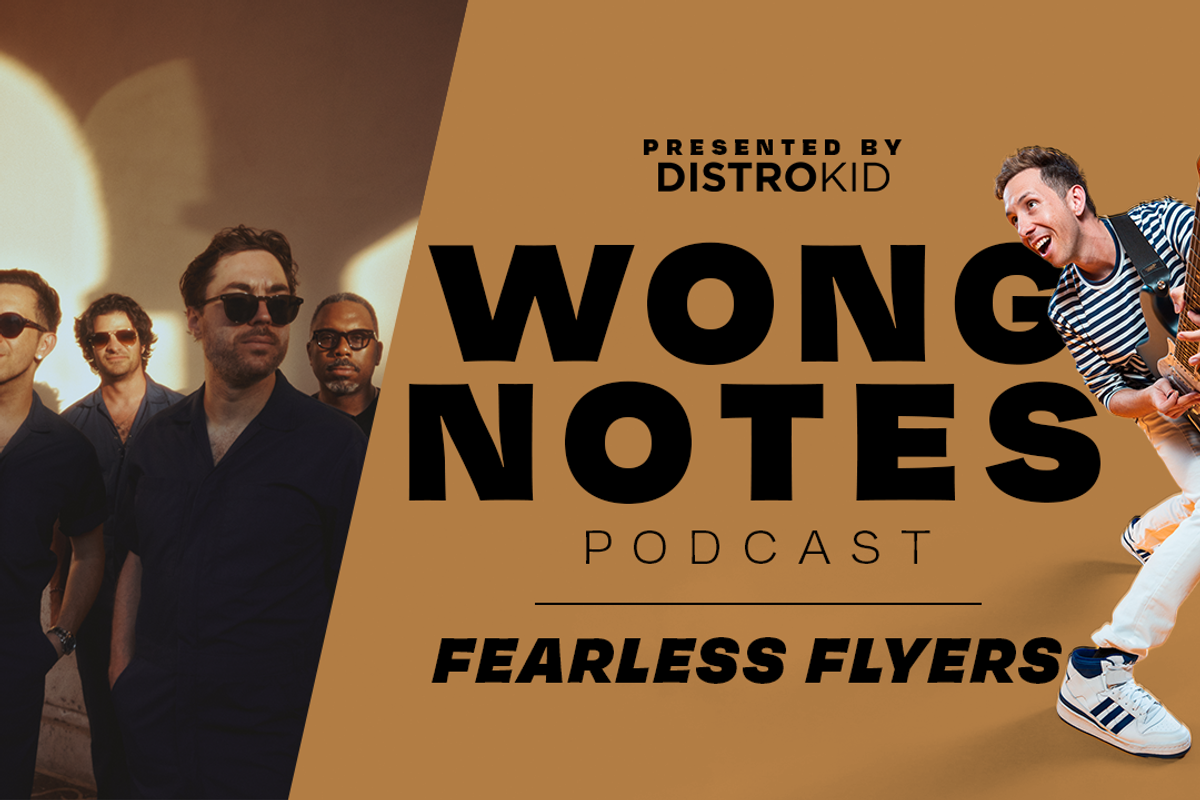
Welcome back for a special episode of Wong Notes! If you couldn’t make it to Cory’s Syncopated Summer Camp, this one’s for you: It features Wong and his Flyers bandmates—Nate Smith on drums, Joe Dart on bass, and Mark Lettieri on guitar—in a live masterclass recording from this summer, as they jam and break down an original composition.
The group starts off with a rowdy rip through the tune (which, apparently, didn’t go so well when they played it in Italy) before slowing down its constituent parts and highlighting Lettieri’s thoughtful arrangements. Each member of the band takes a turn explaining their approach to jamming and improvising—and how to know when trouble is coming. (For Smith, it’s when one player tries to “force an agenda.”)
The most important instrument for a successful jam and songwriting session? Your ears: It all comes back to listening. So listen in and learn with the best on this exclusive instalment.
Prog-Rock Supergroup DarWin Release New Studio Album Distorted Mirror Out Now!

Prog-Rock supergroup DarWin today release their anticipated new studio album, Distorted Mirror, via OoS/Phantom Recordings.
Distorted Mirror, which is co-produced by Simon Phillips and DarWin, is the follow up to last year’s hit release, Five Steps on the Sun, and picks up exactly where the last album left off. Offering original and creative rock songs that continue to break new ground, Distorted Mirror is a true journey, packed with intricate melodies, sledgehammer grooves and wall-to-wall virtuoso playing.

DarWin is an ongoing musical exploration led by songwriter/guitarist DarWin and drumming legend Simon Phillips (Toto, Jeff Beck, The Who, Judas Priest, Tears for Fears). Since forming in 2015, the duo has collaborated with lead vocalist Matt Bissonette (Joe Satriani, Ringo Starr, Elton John), bass sensation Mohini Dey (Steve Vai, Willow Smith, Guthrie Govan), guitarist Greg Howe (Michael Jackson, Protocol, Justin Timberlake) as well as a hall of fame roster of musicians over the years, including Derek Sherinian, Julian Pollack (J3PO), Jesse Siebenberg, Andy Timmons, Billy Sheehan, Guthrie Govan, and many more.
Over the span of the last several months the group have released a vast palette of captivating videos offering both conceptual and live performance as well as a series of guitar and drum playthrough clips that can be viewed HERE.
Watch the official music performance video for “Man vs. Machine” HERE.
An alternative conceptual cut of the “Man vs. Machine” video titled “Dawn of the Robots Version” is also available HERE.
Fans can also watch the official music video for the song “Rising Distortion” HERE.
The Distorted Mirror album tracklisting is as follows:
- Rising Distortion
- Distorted Mirror
- Man vs. Machine
- 33rd Century Man
- Cry a River
- Glow
- Loophole
- Winter Fare
Stream / Share / Purchase the album HERE
